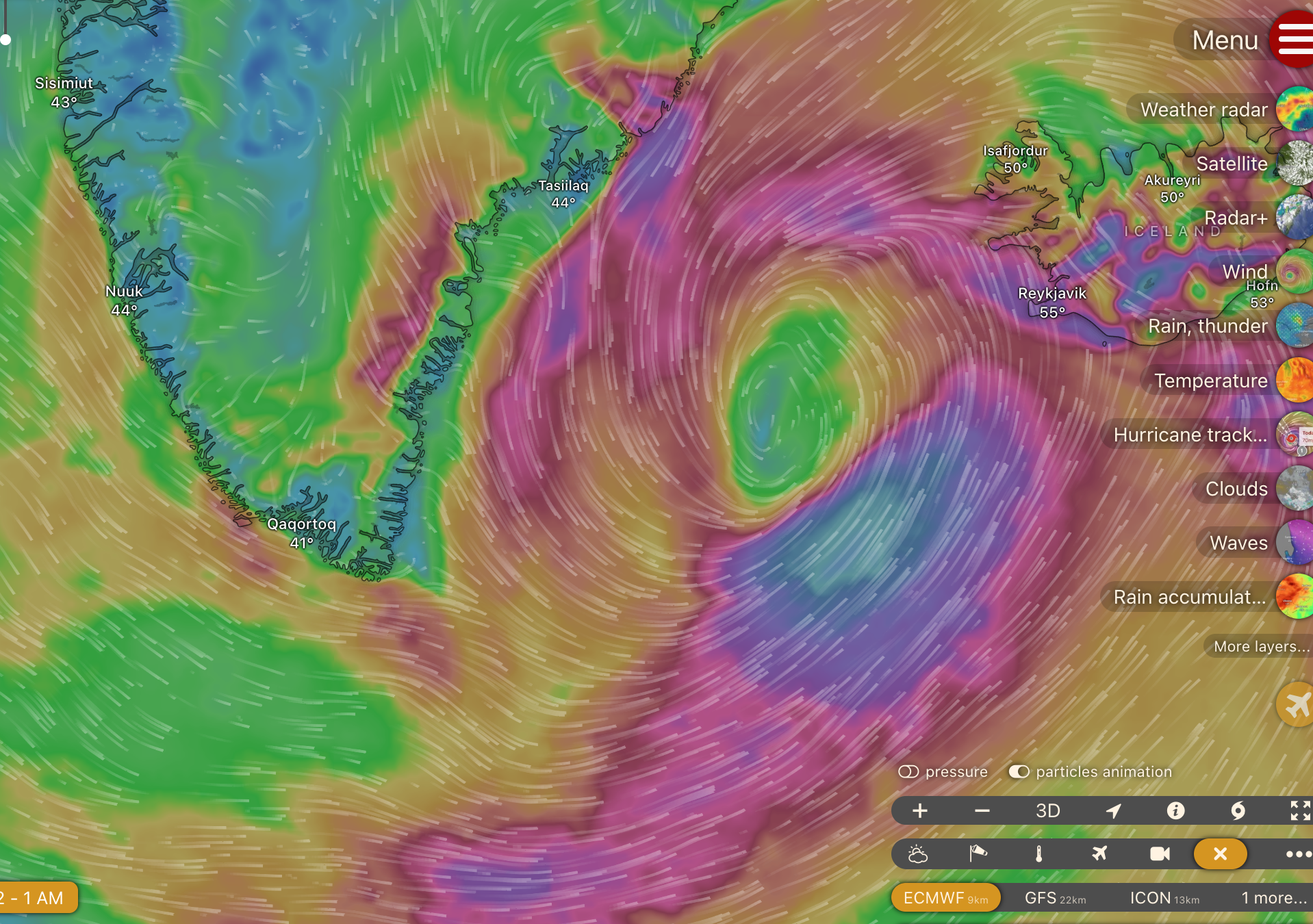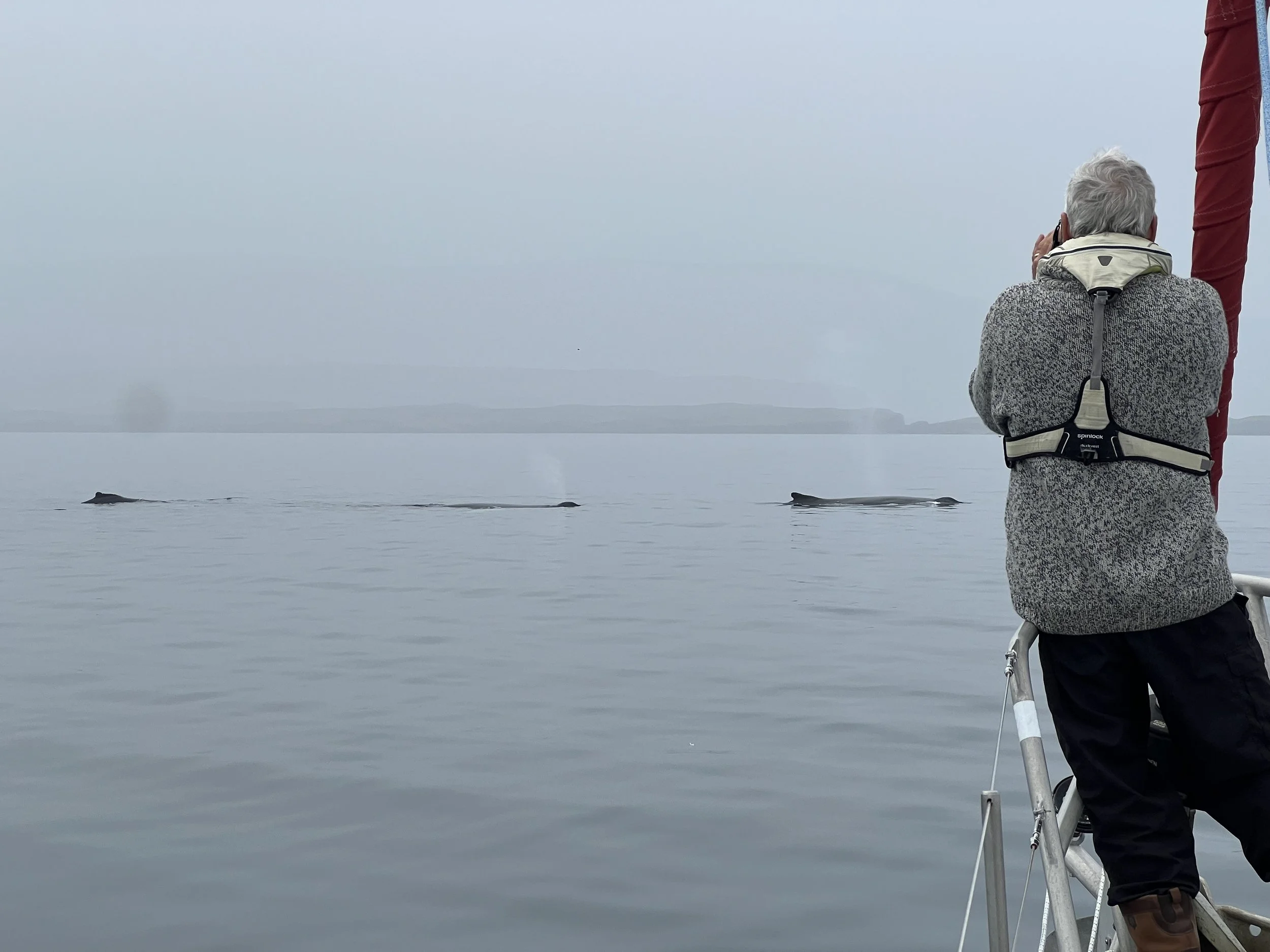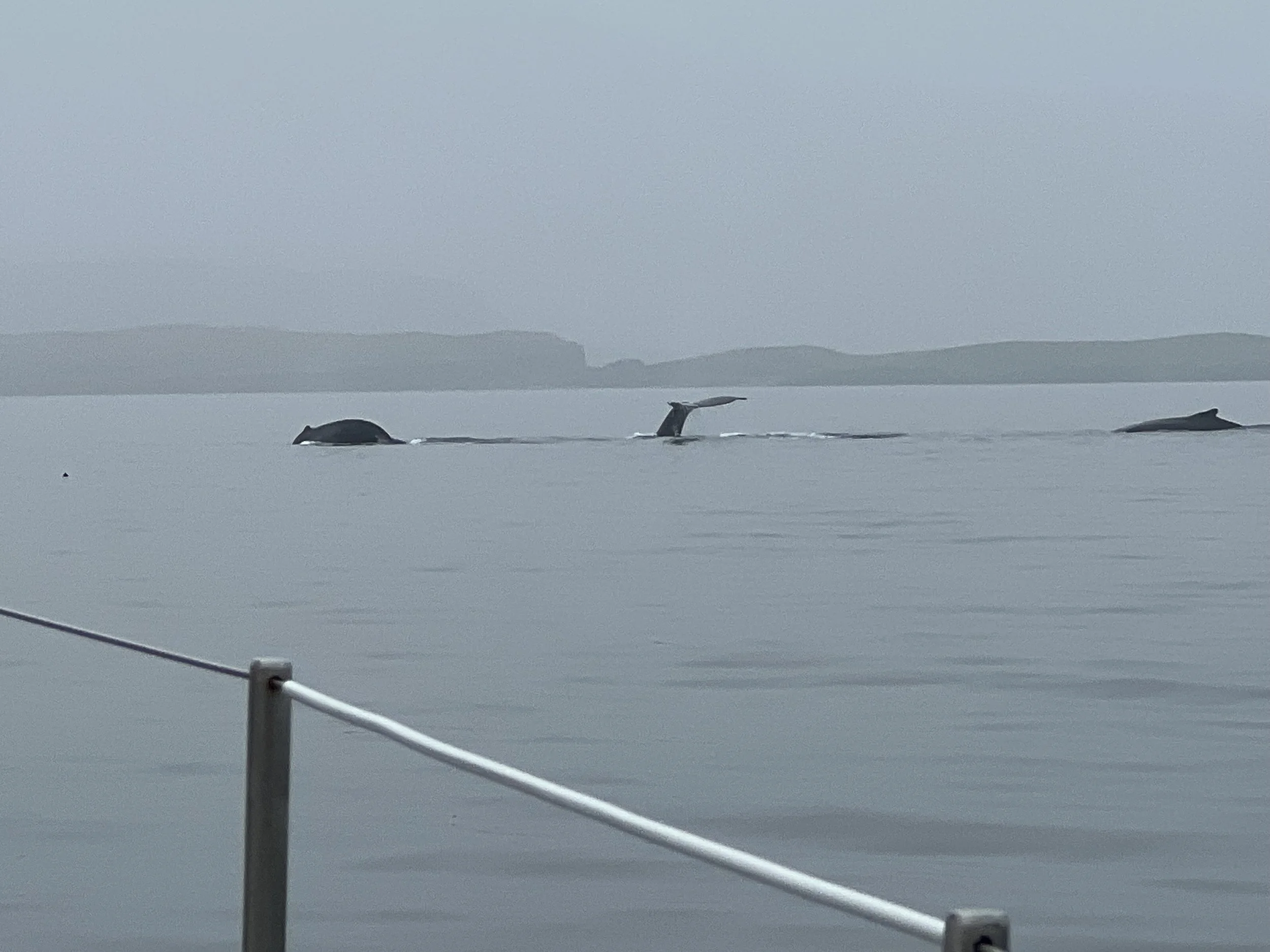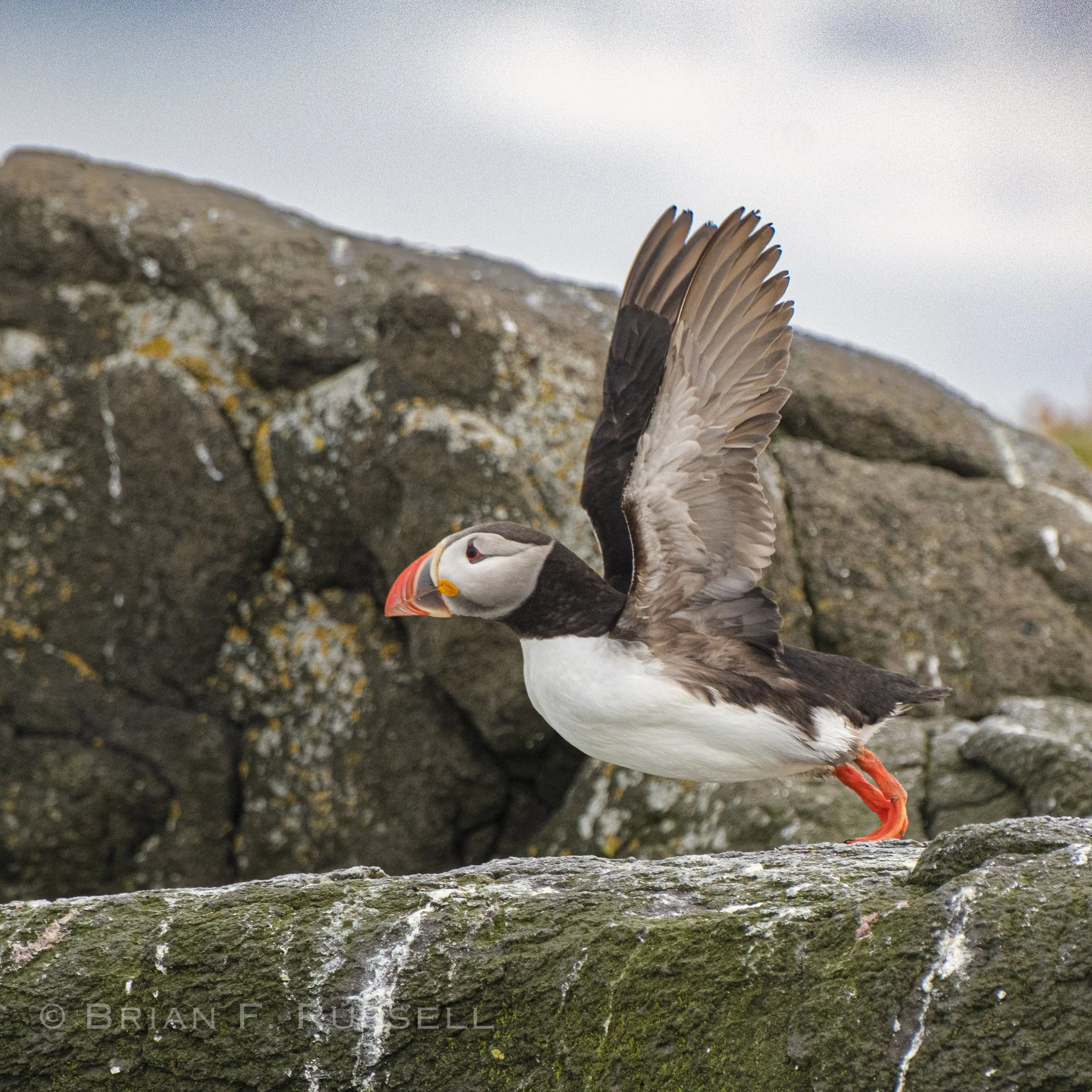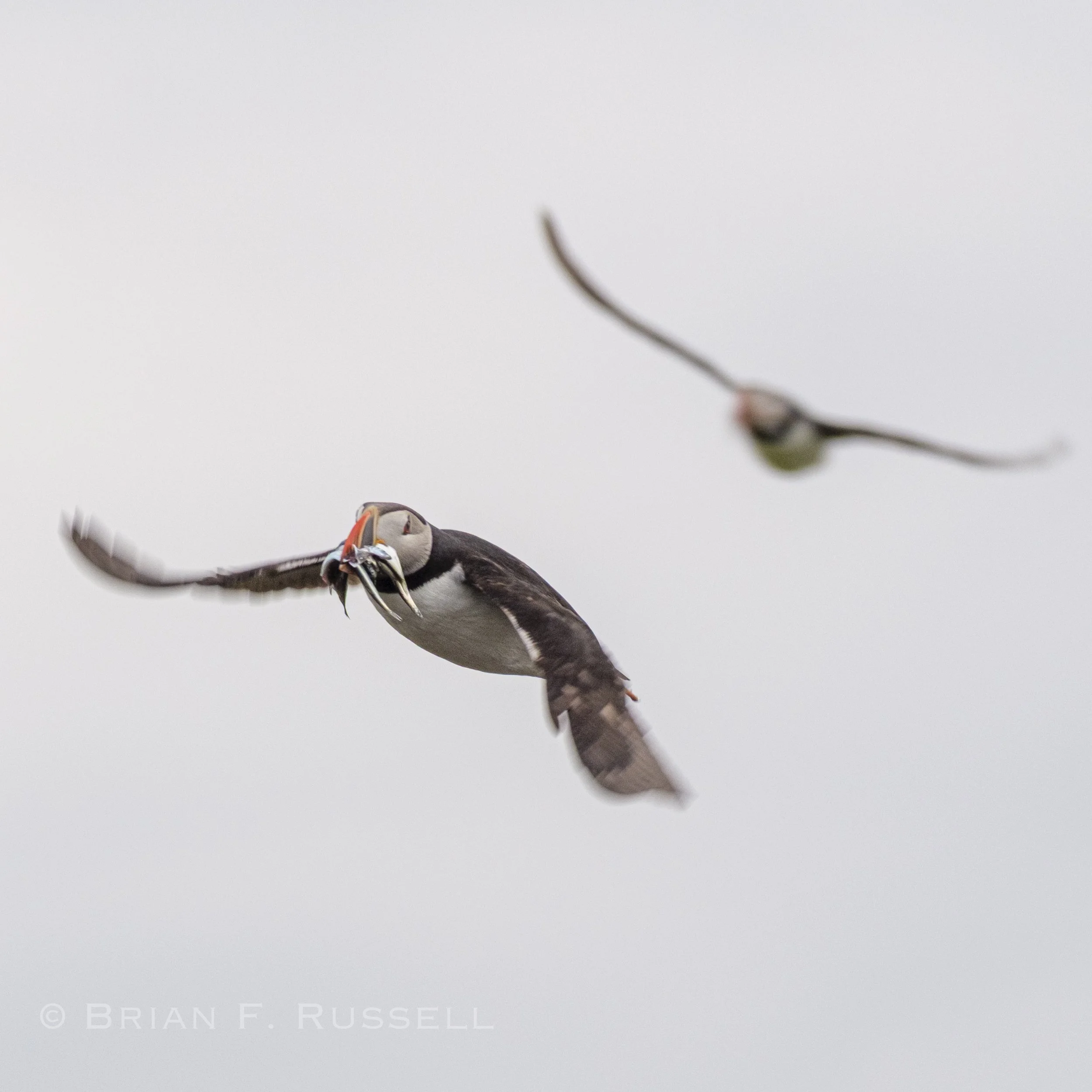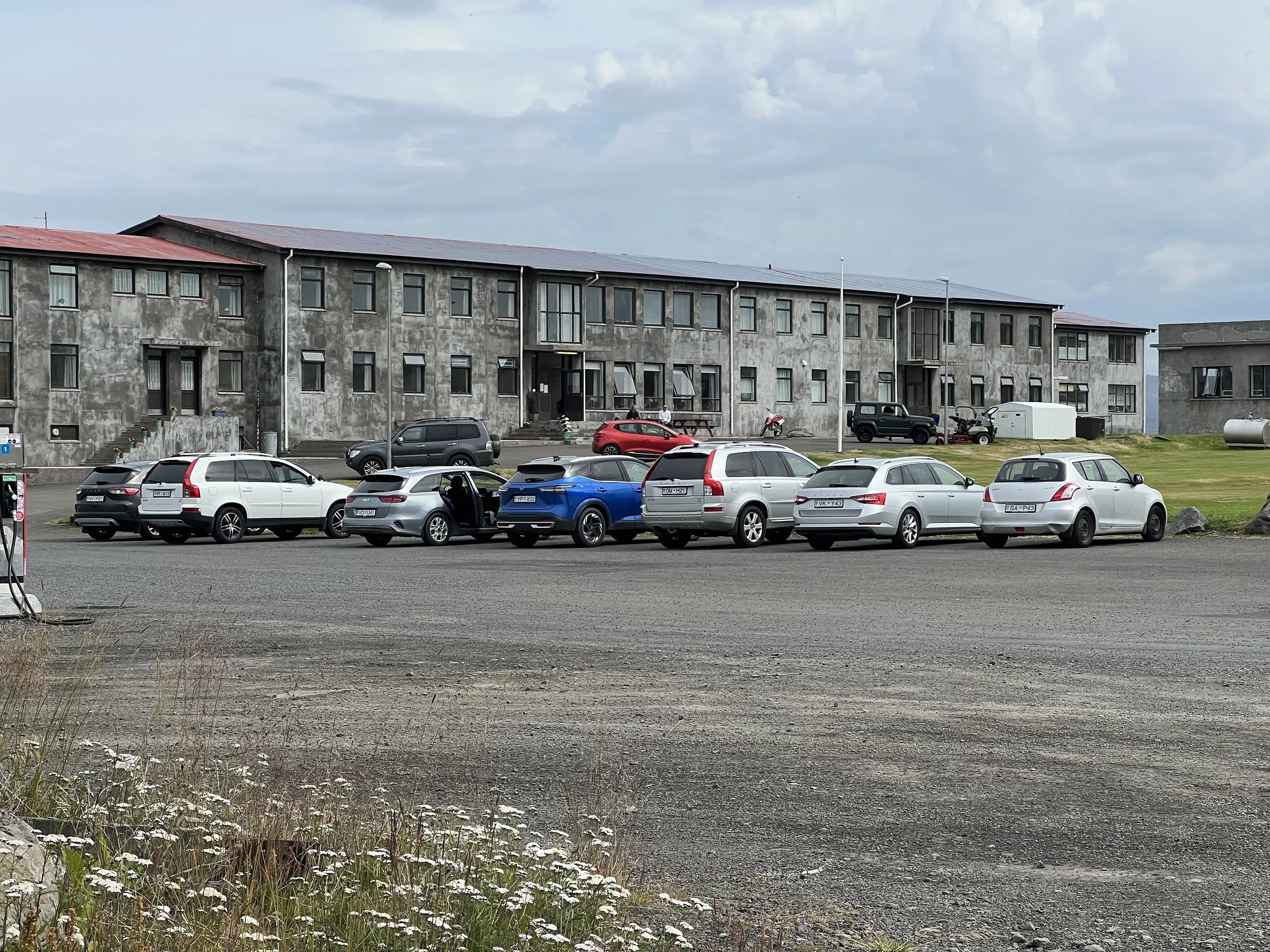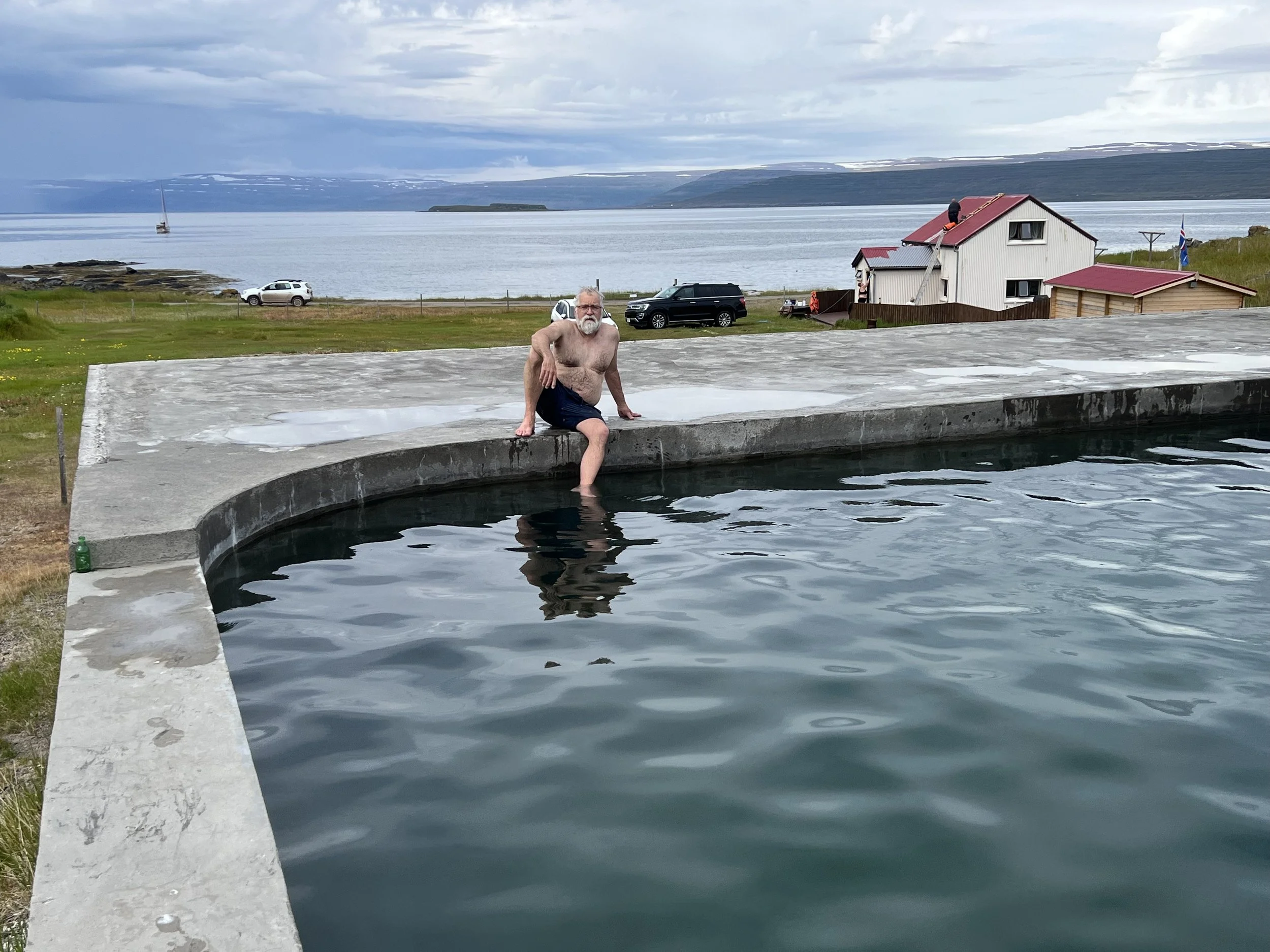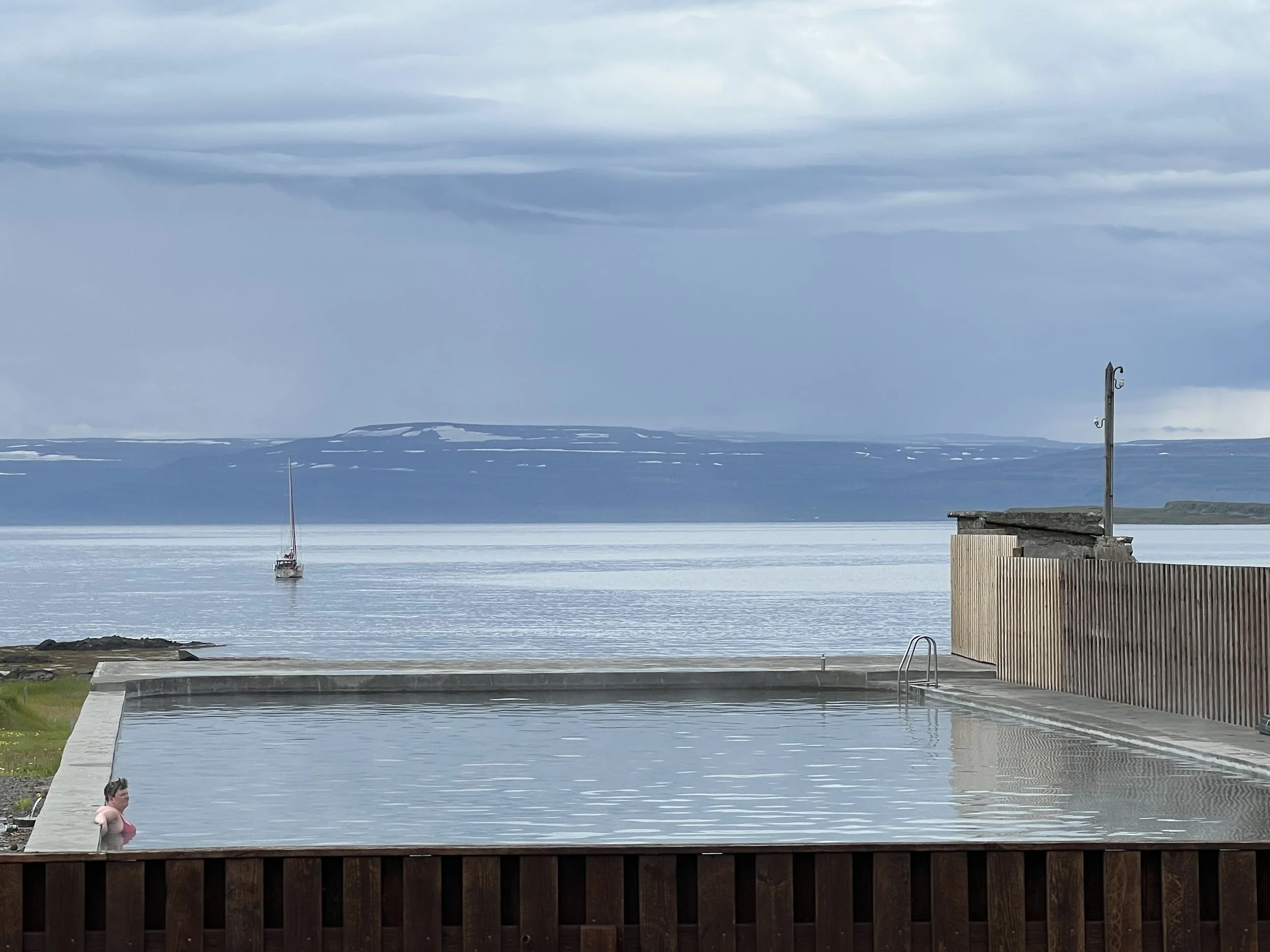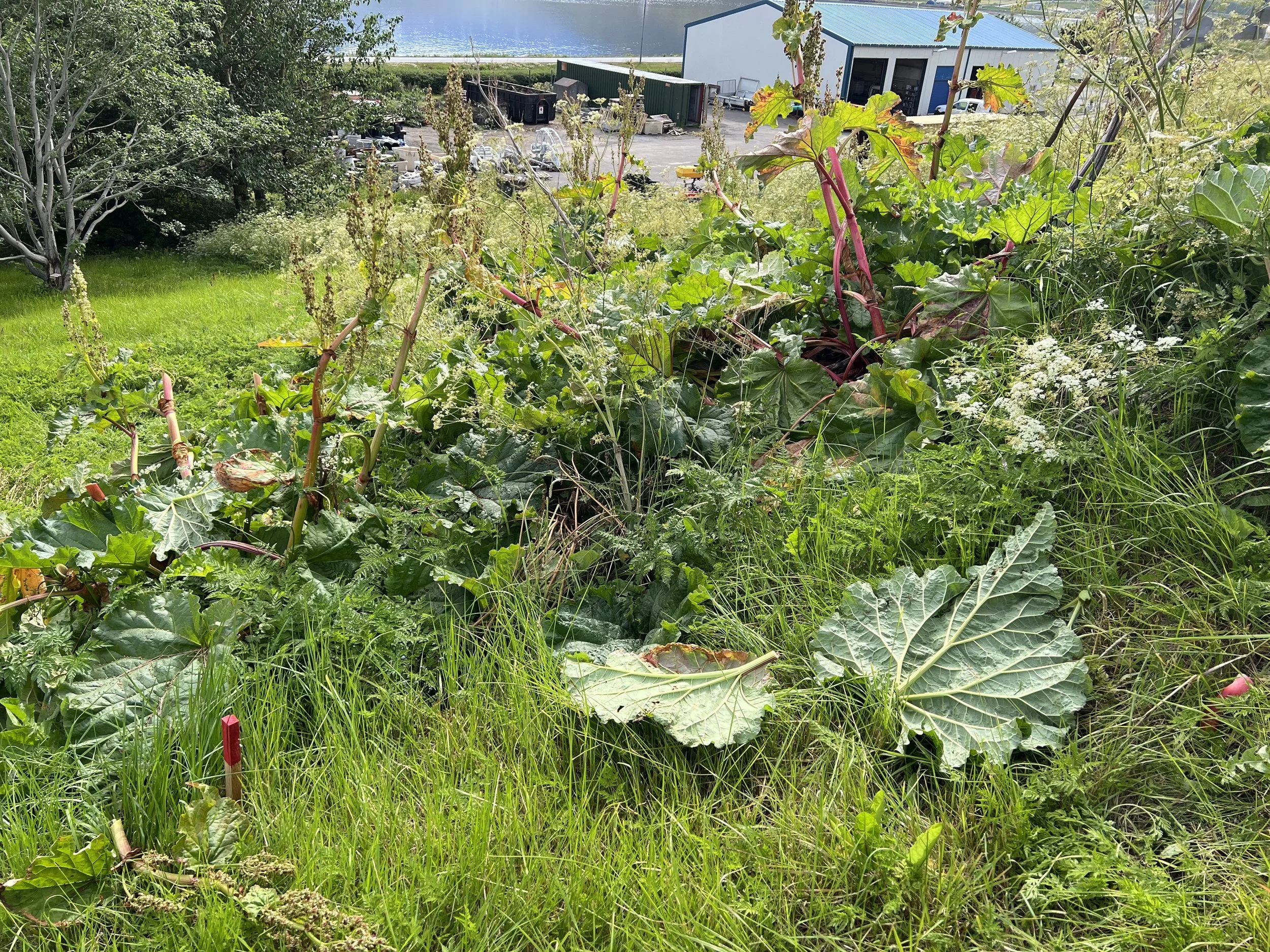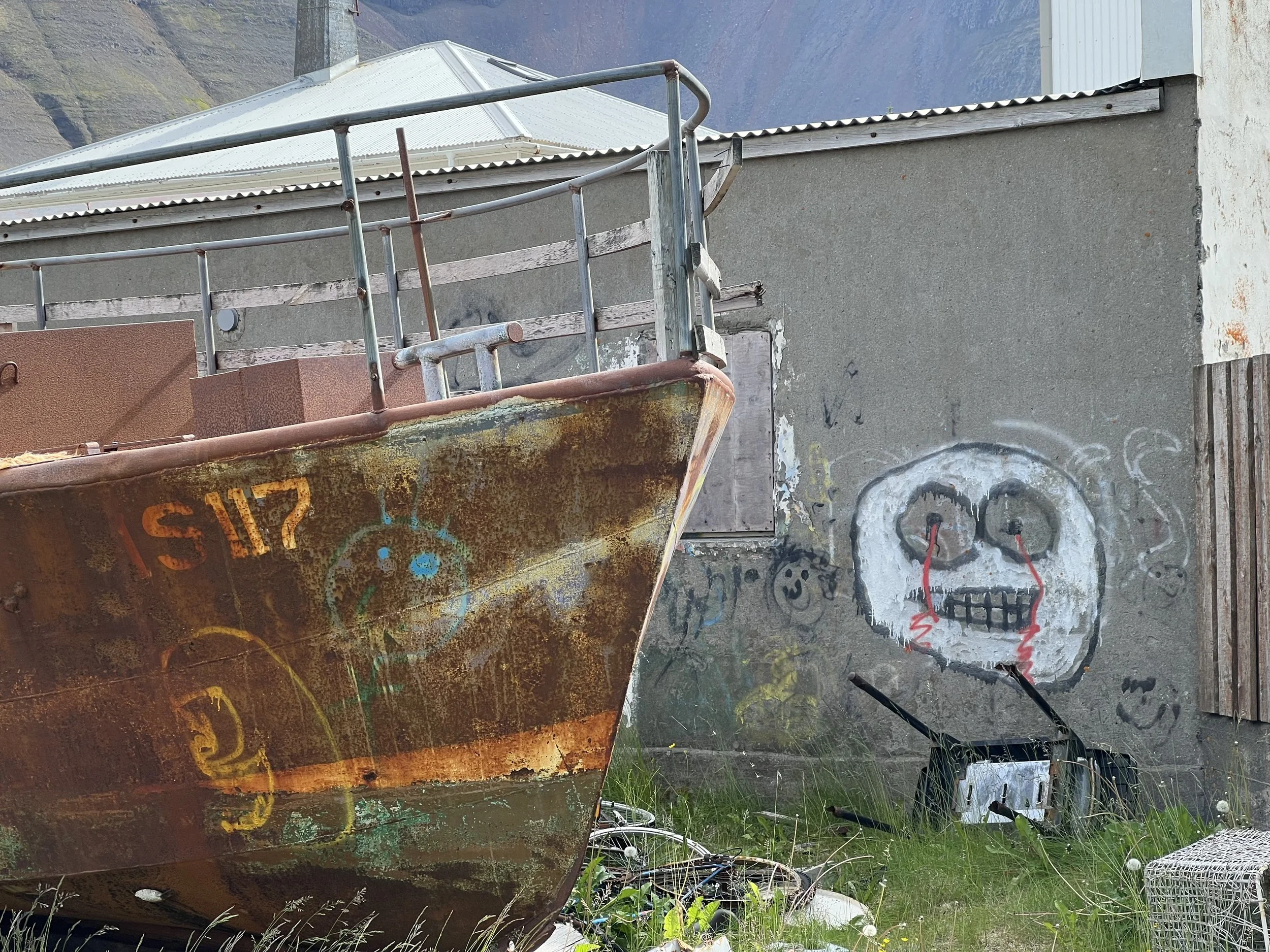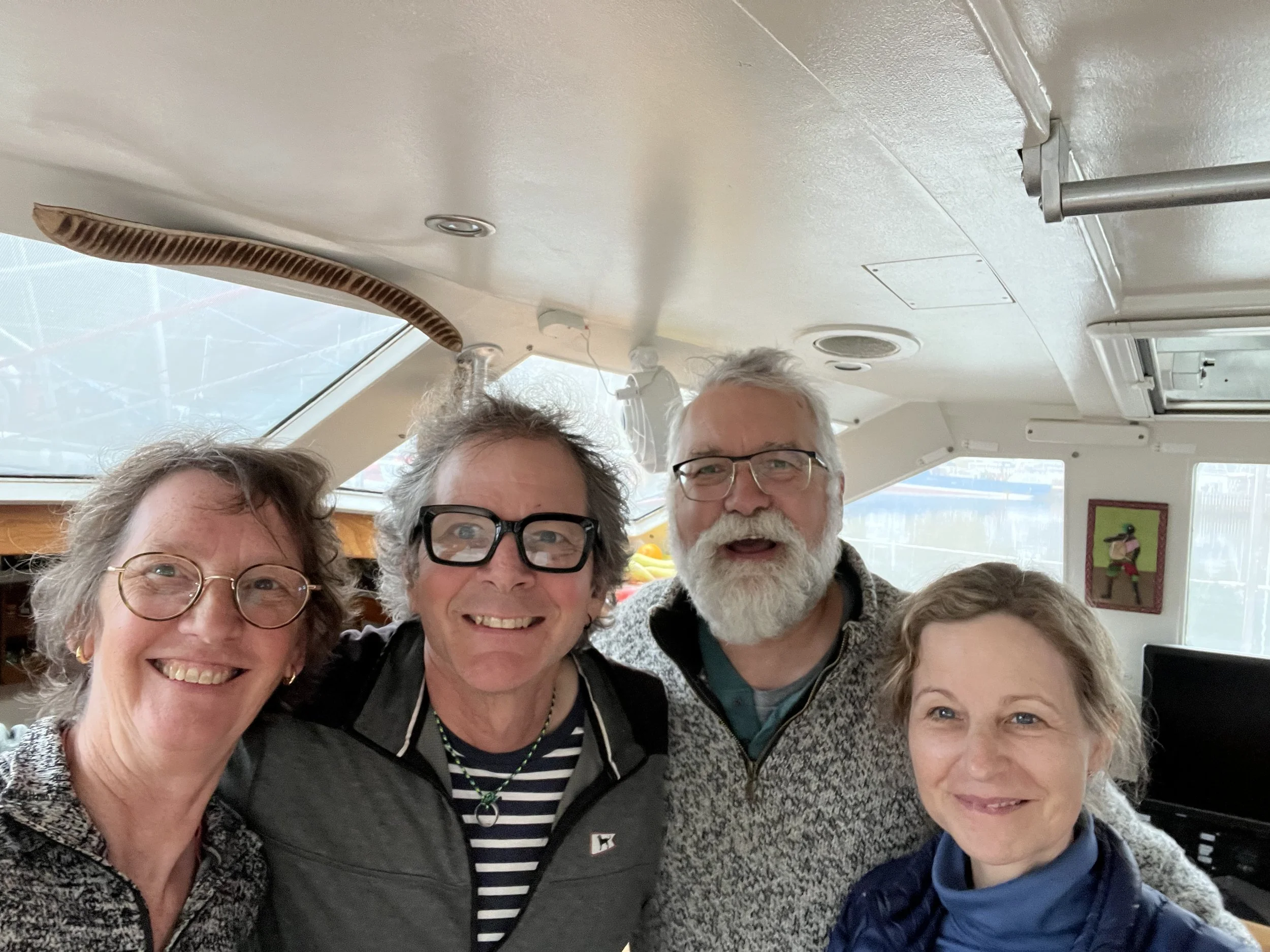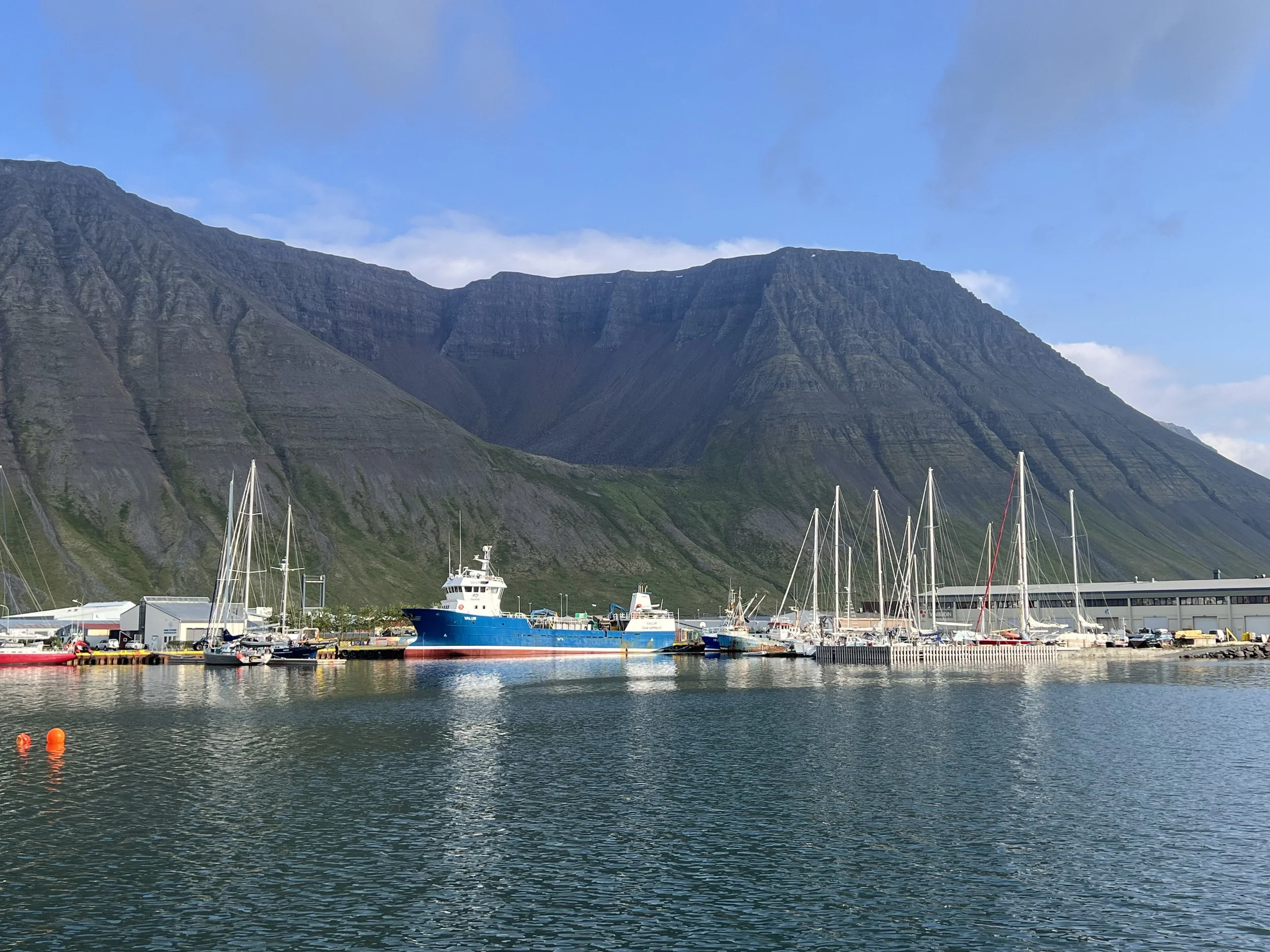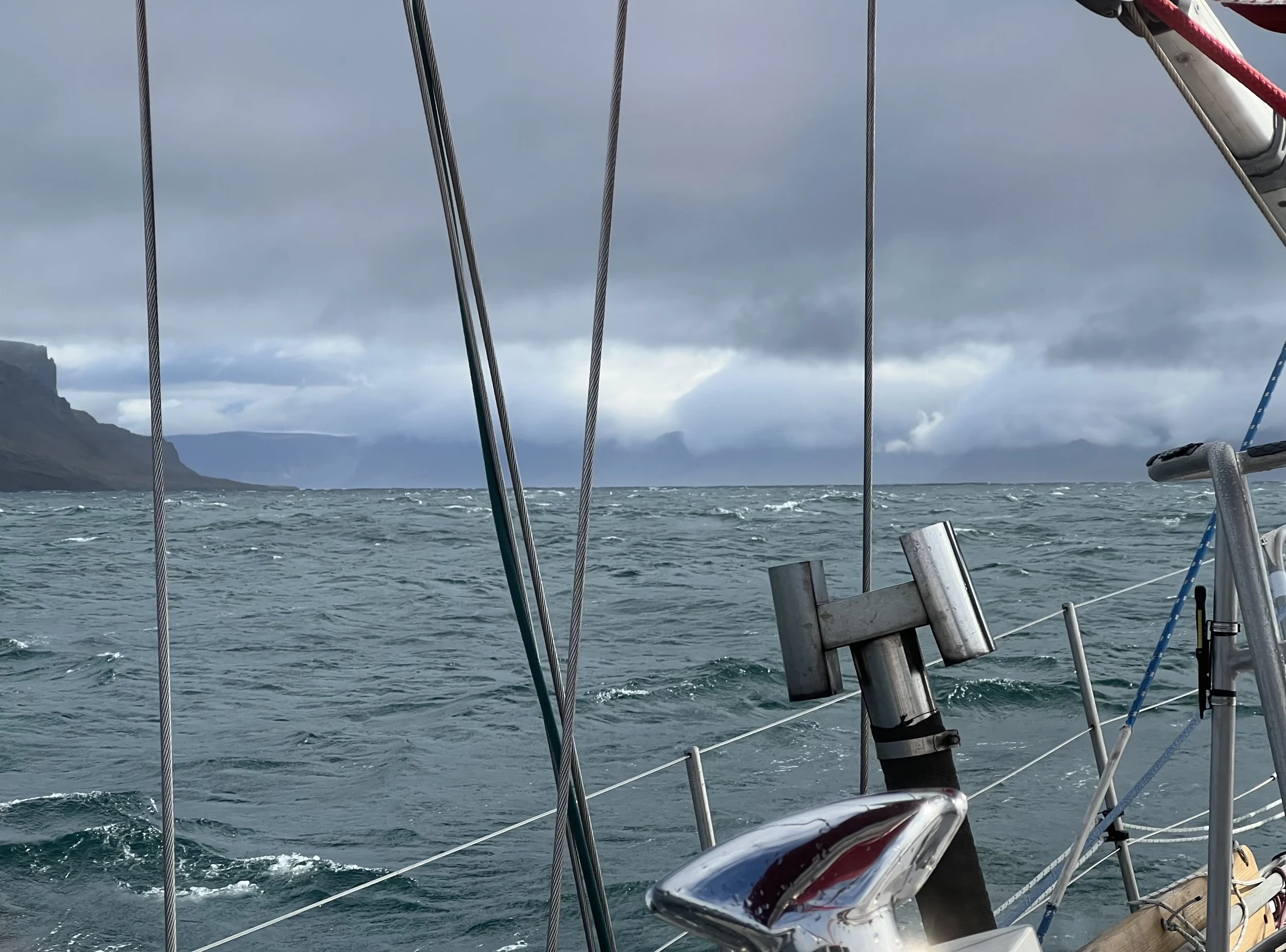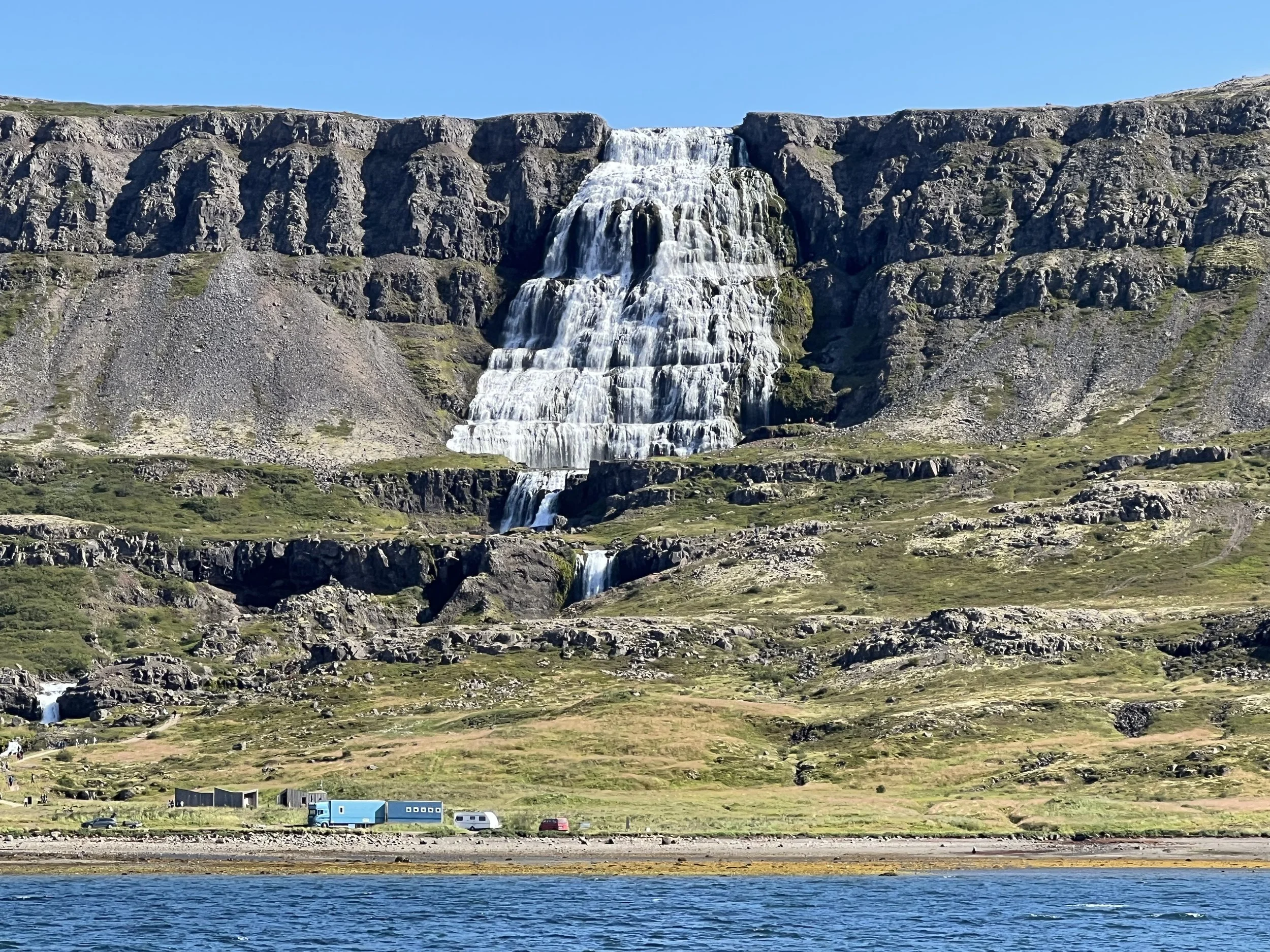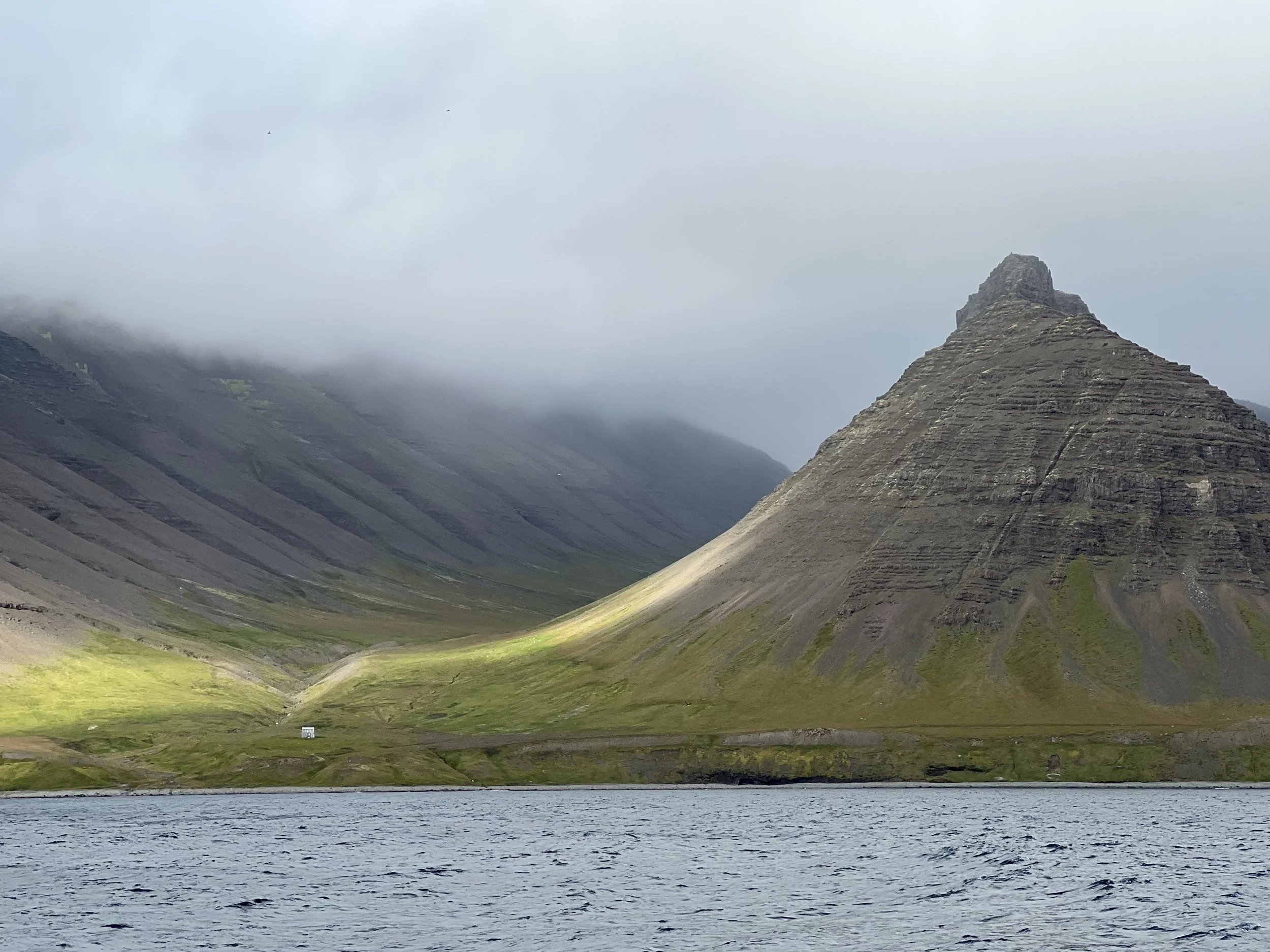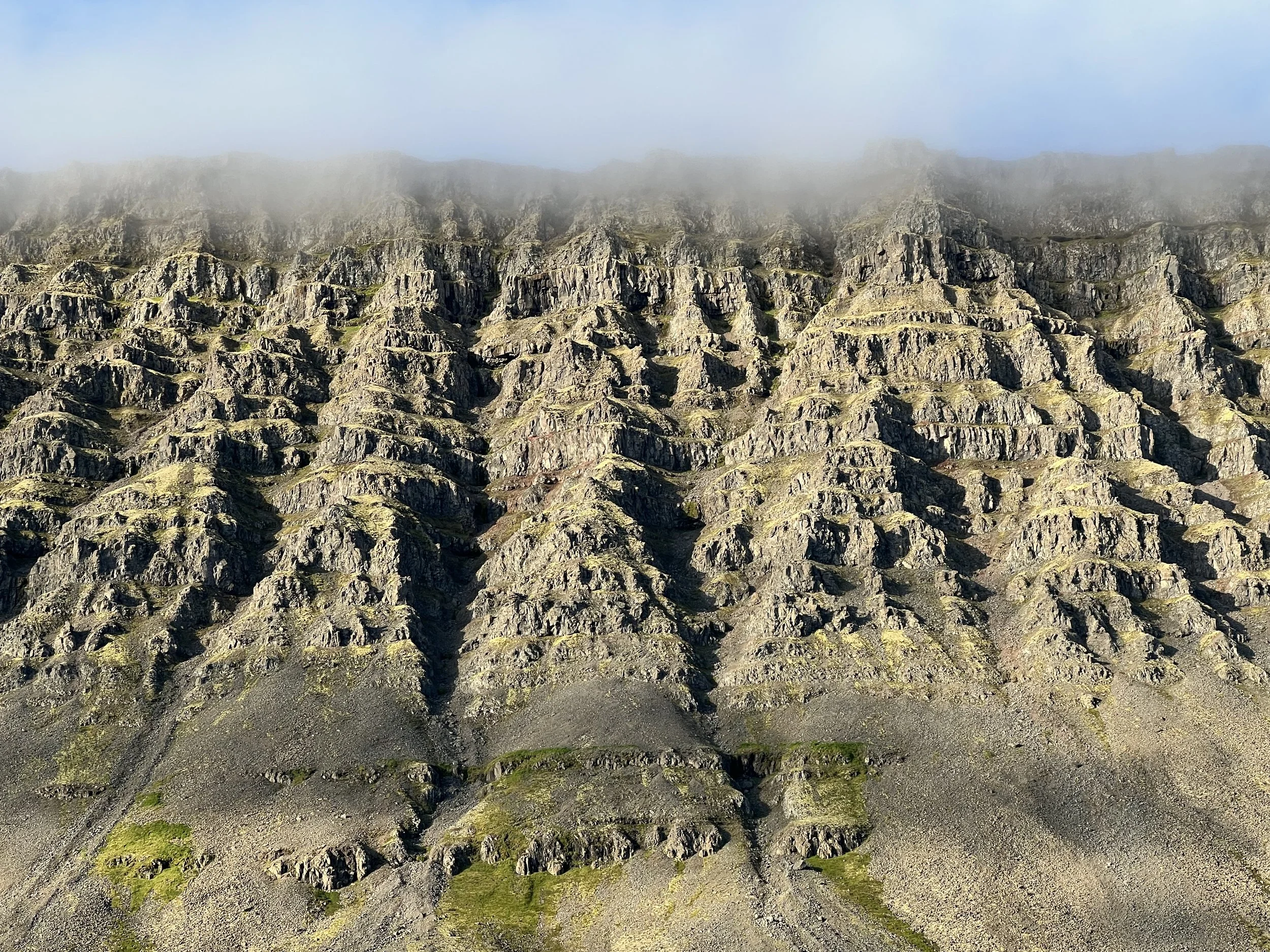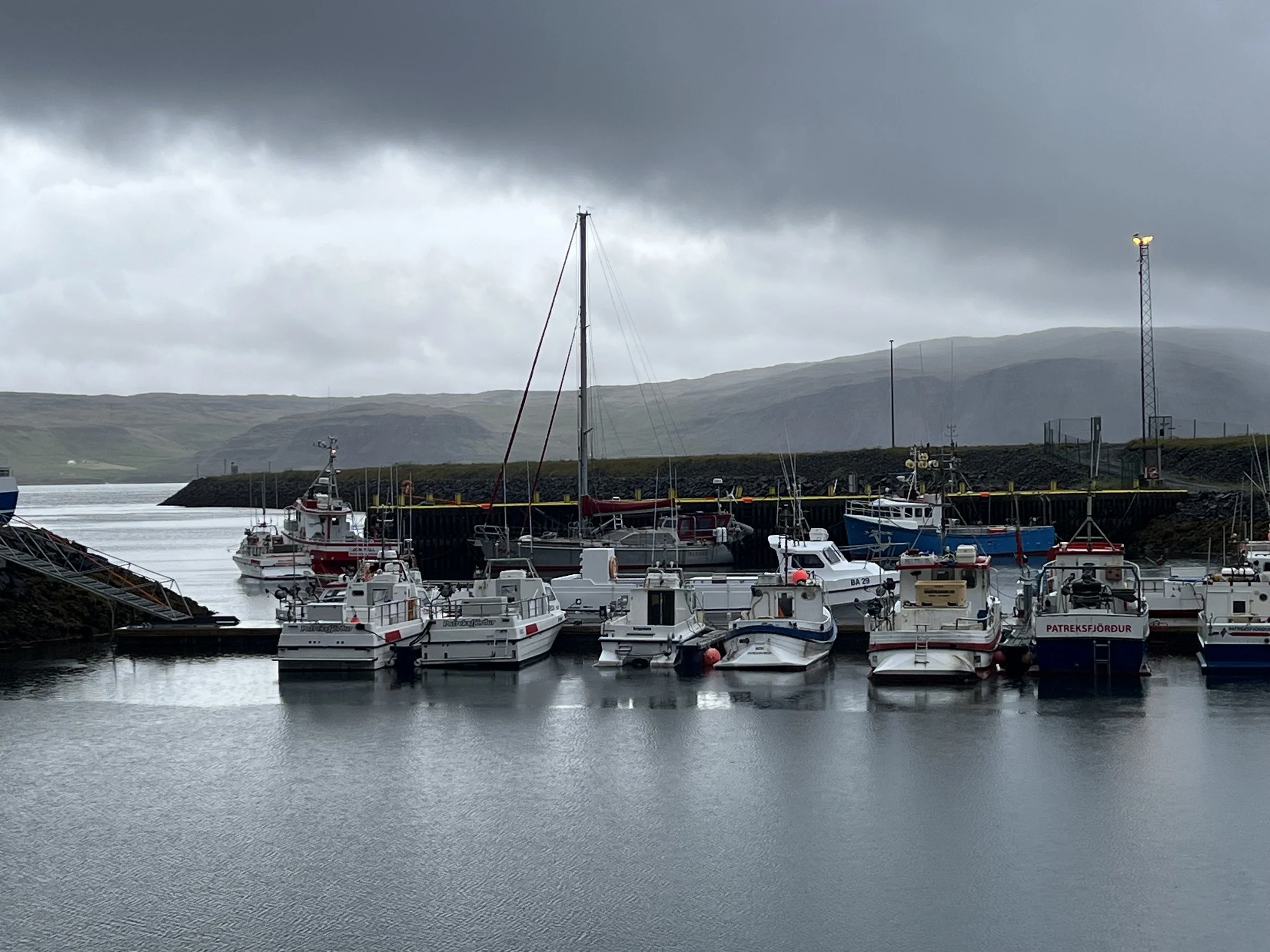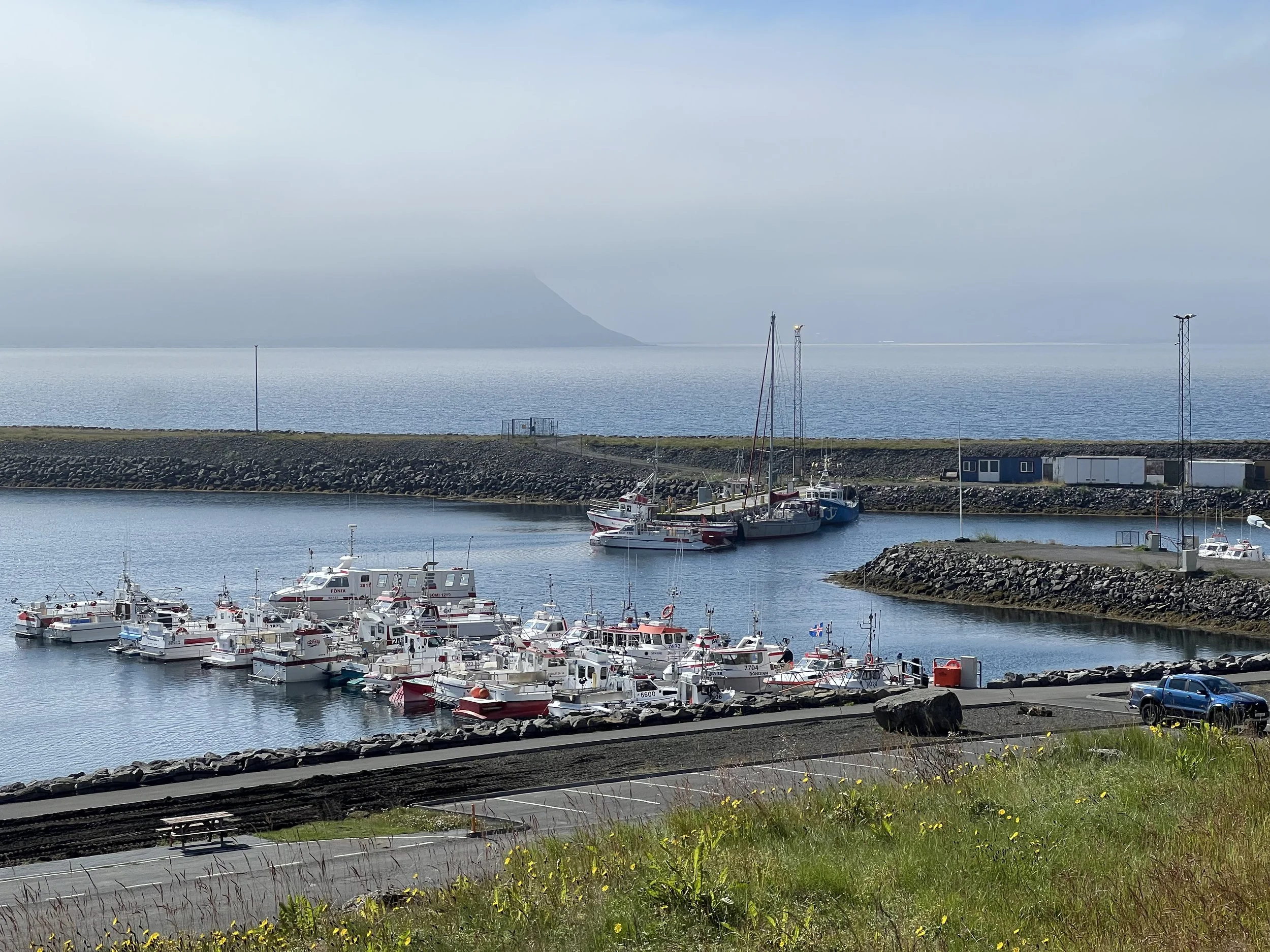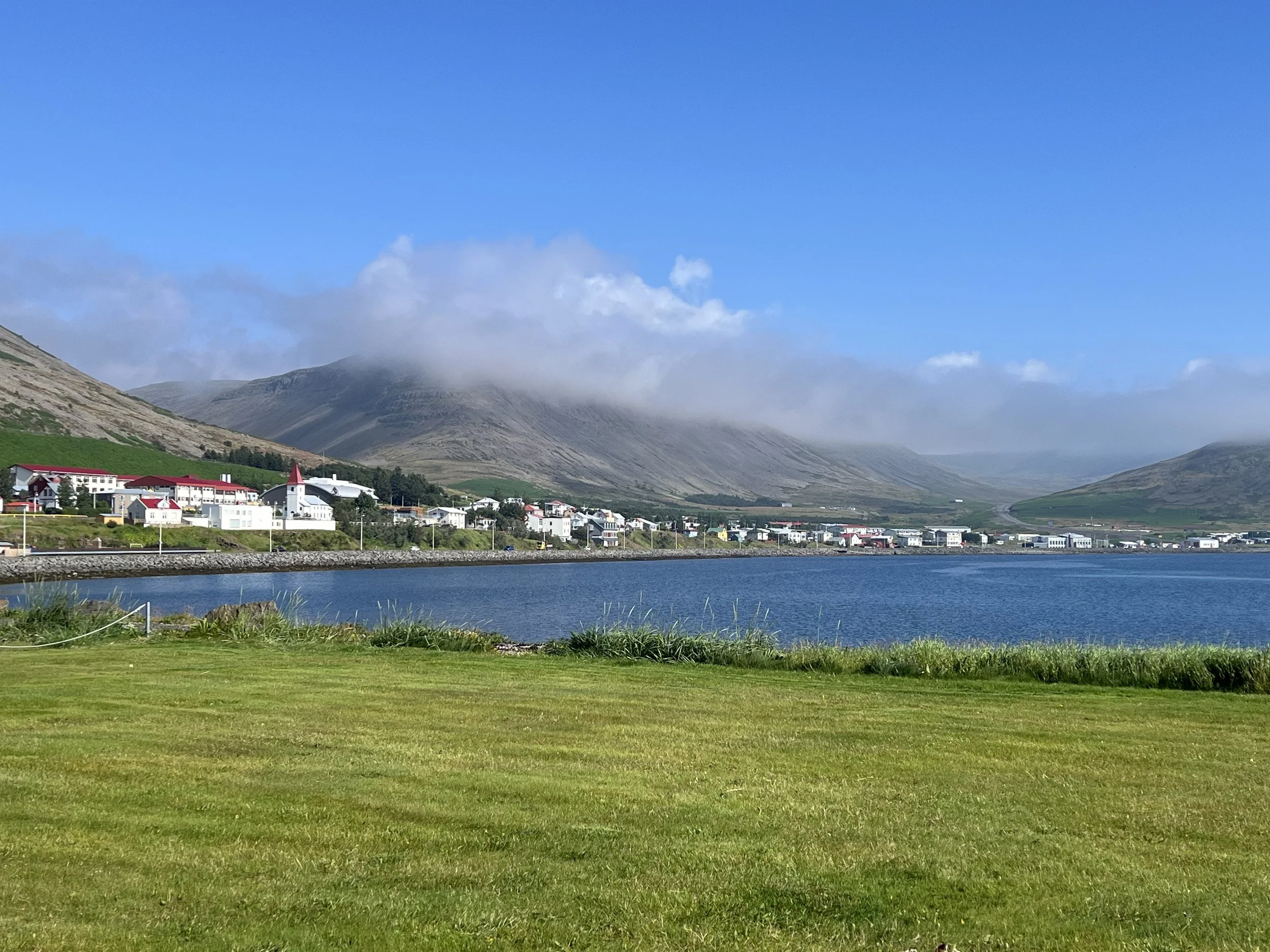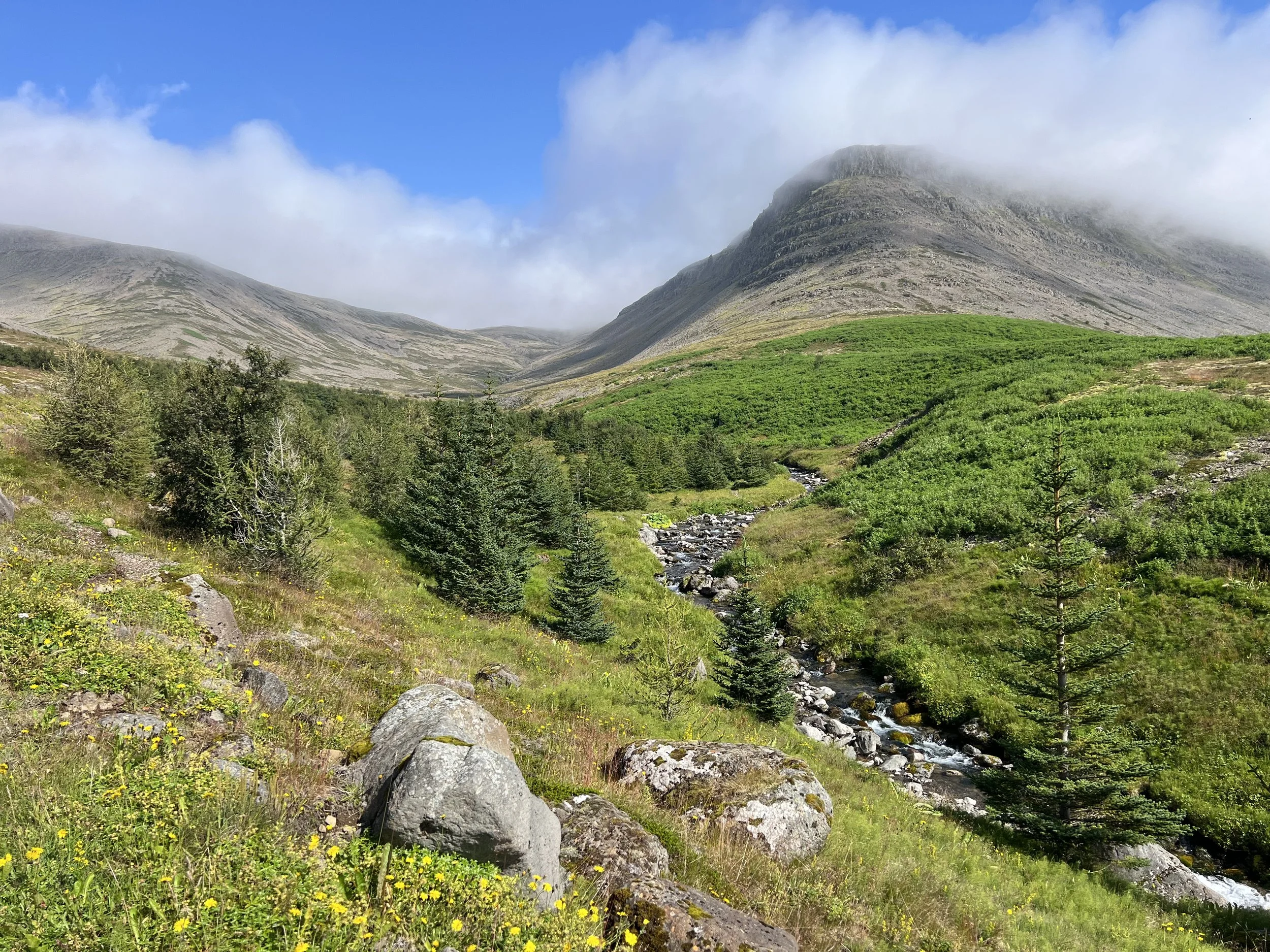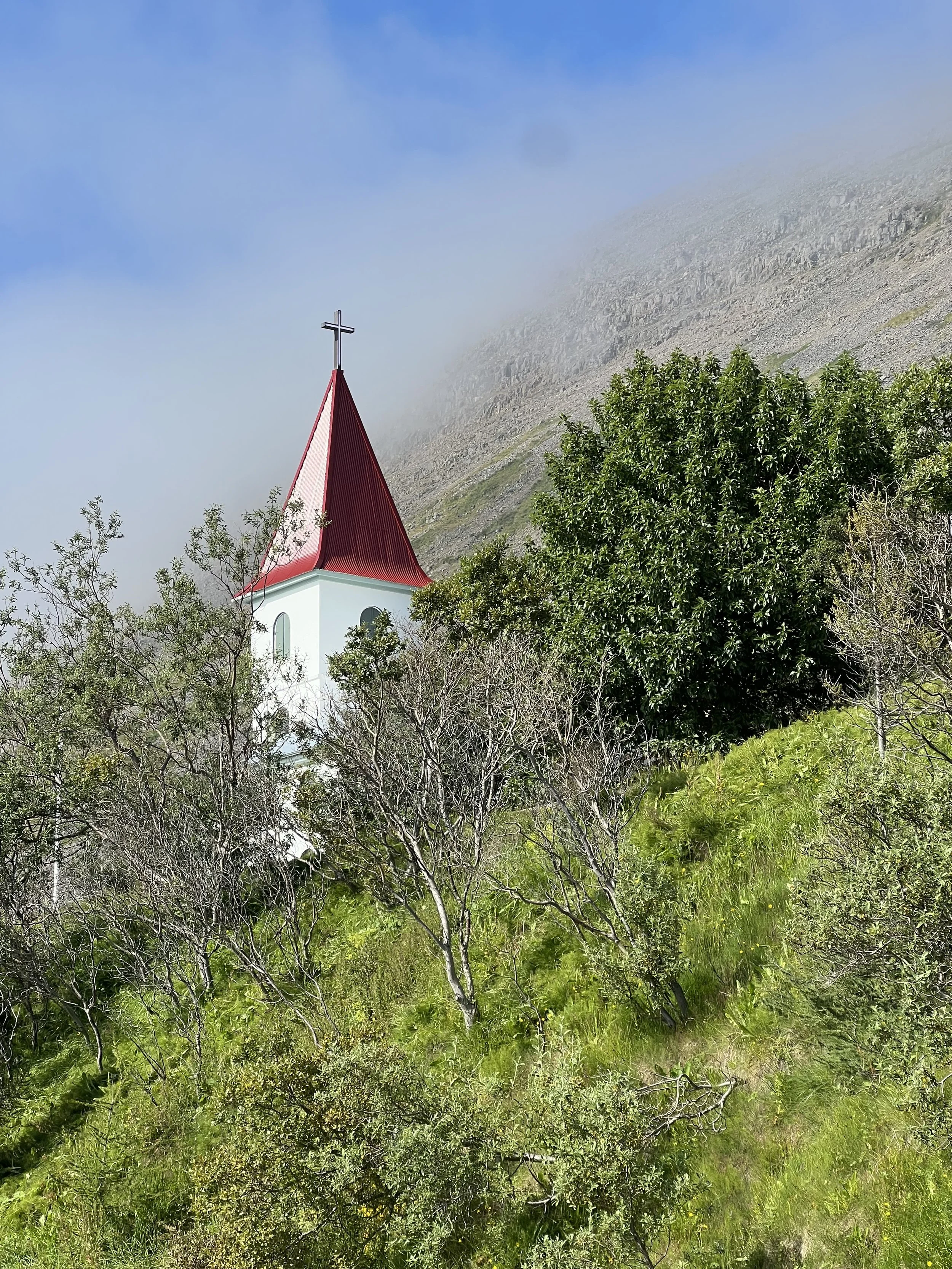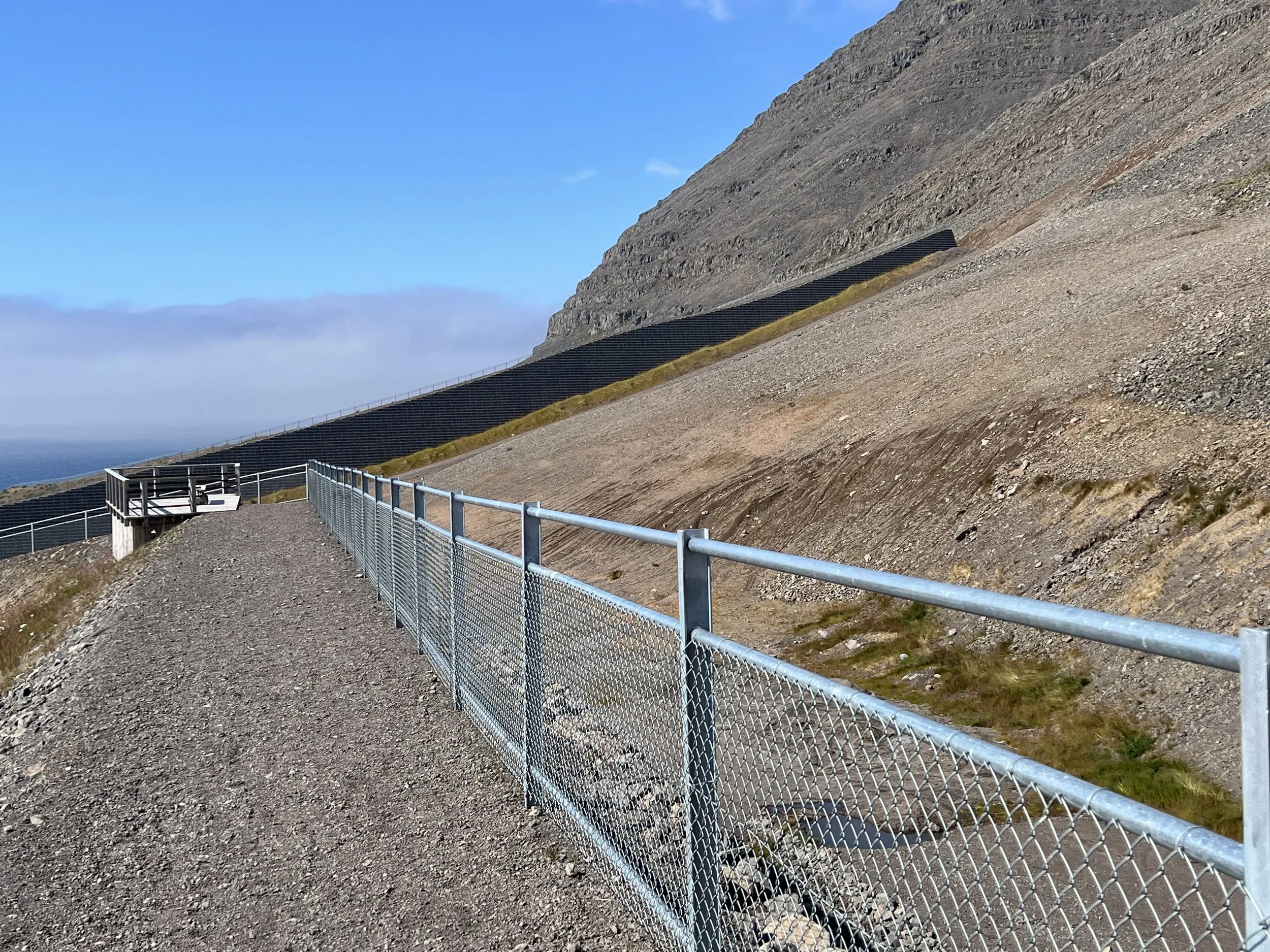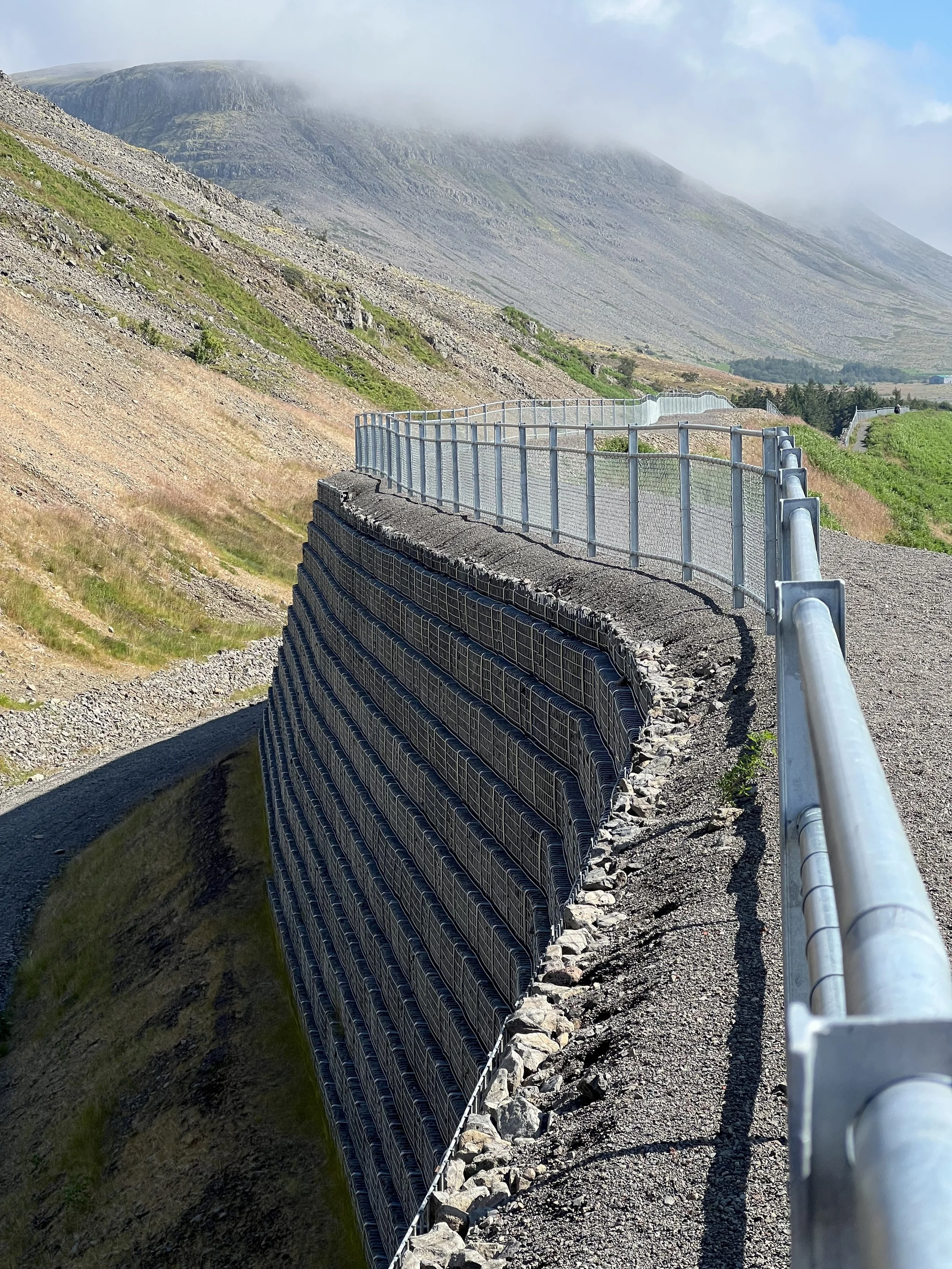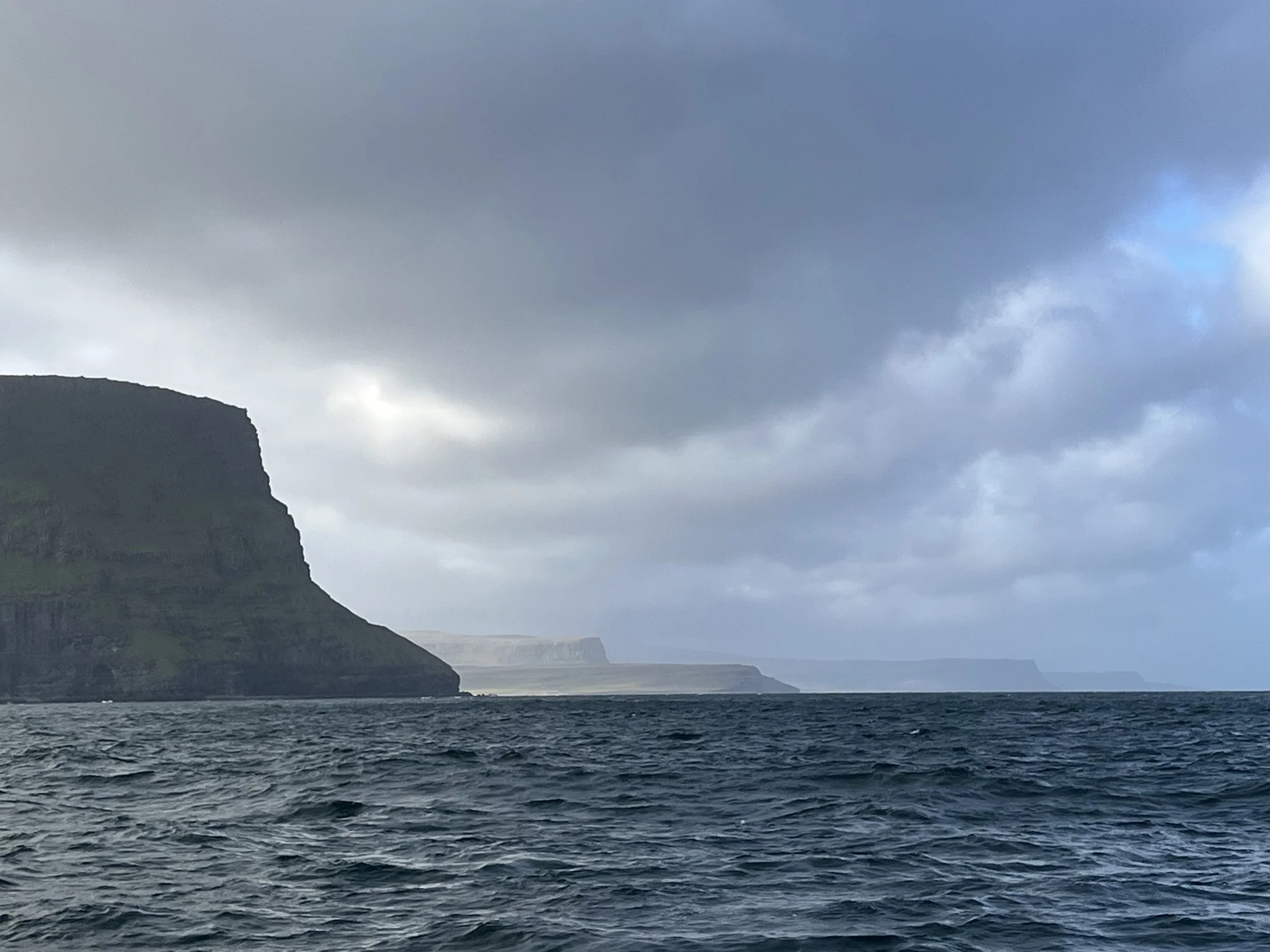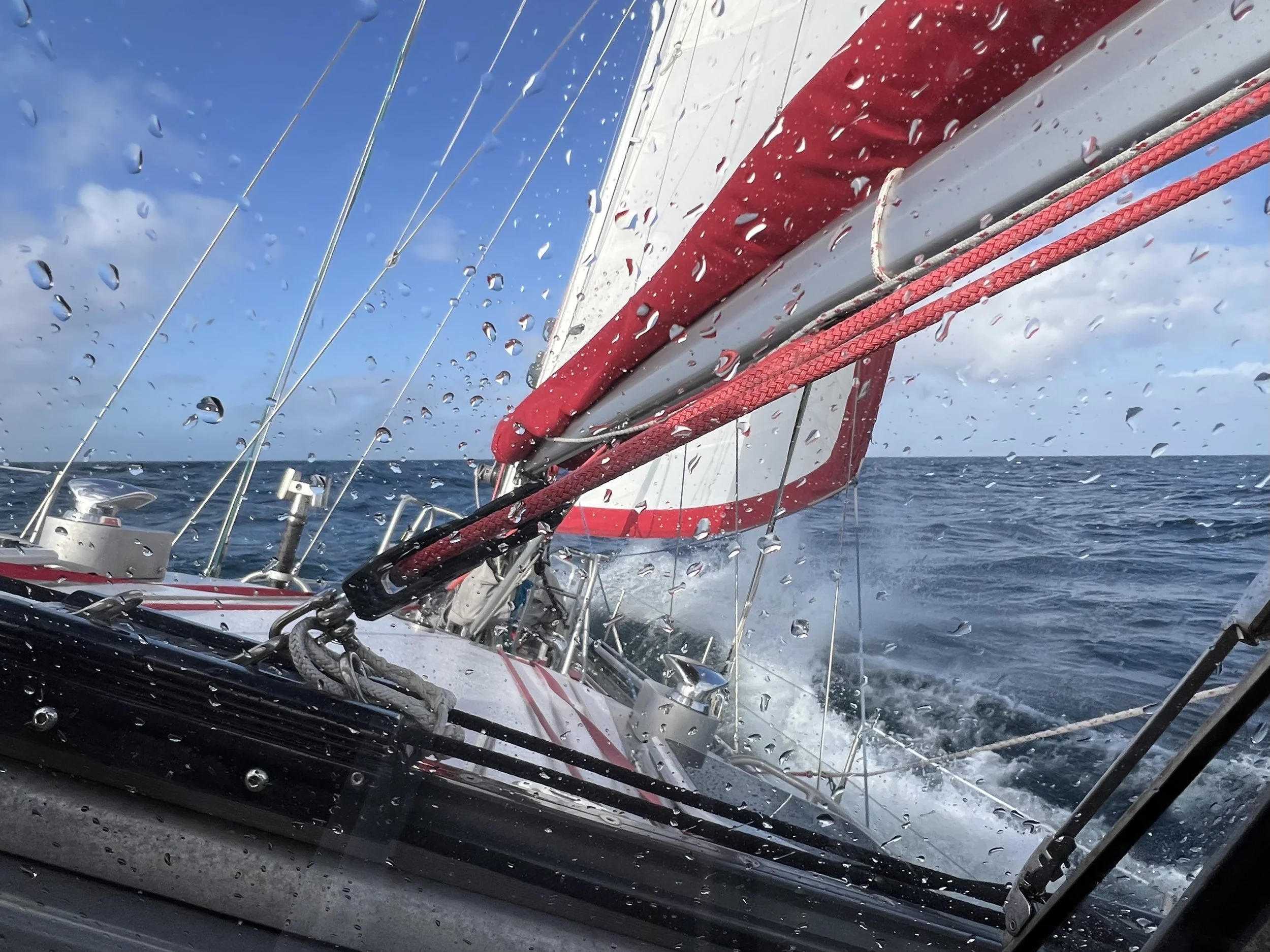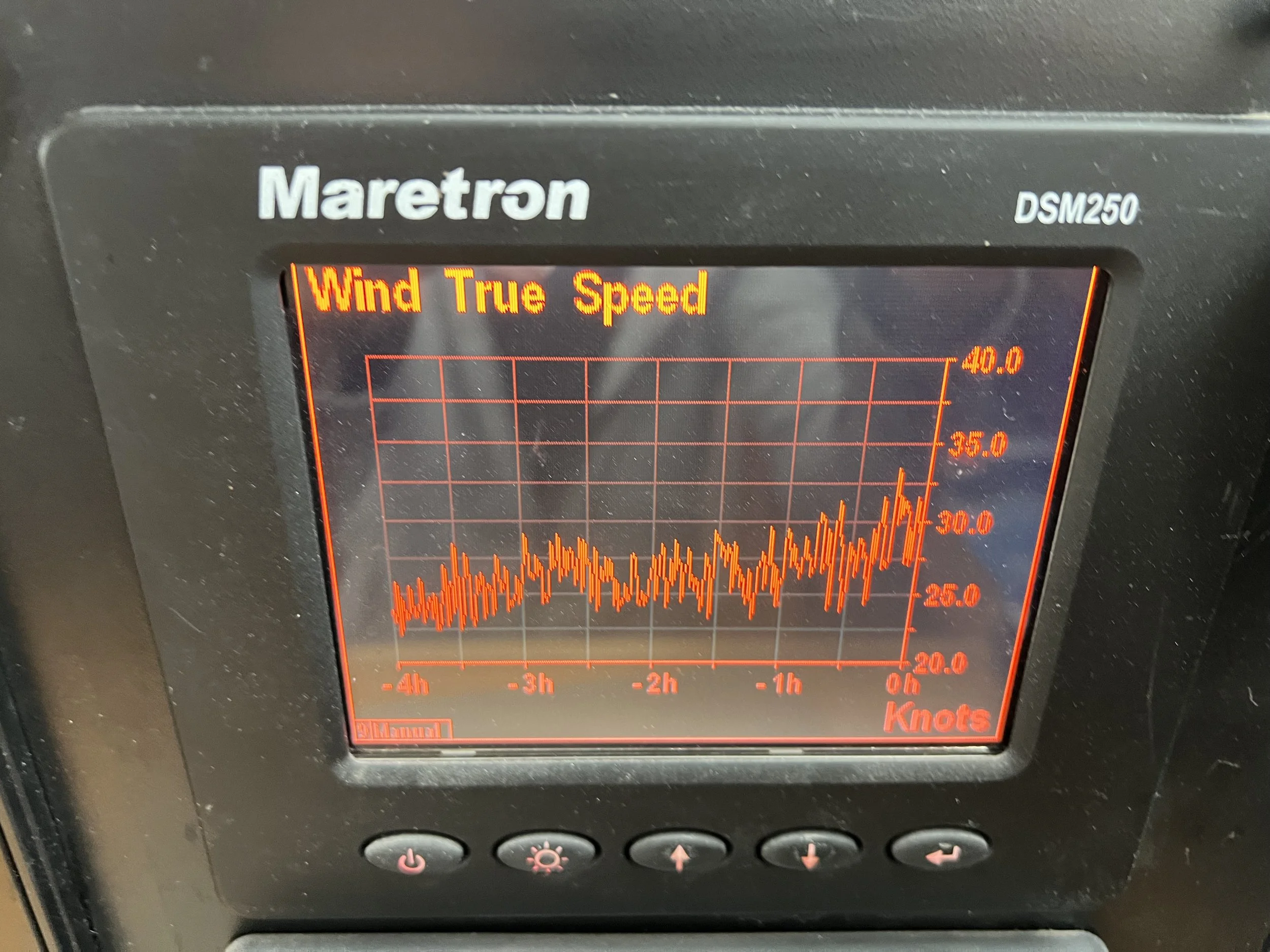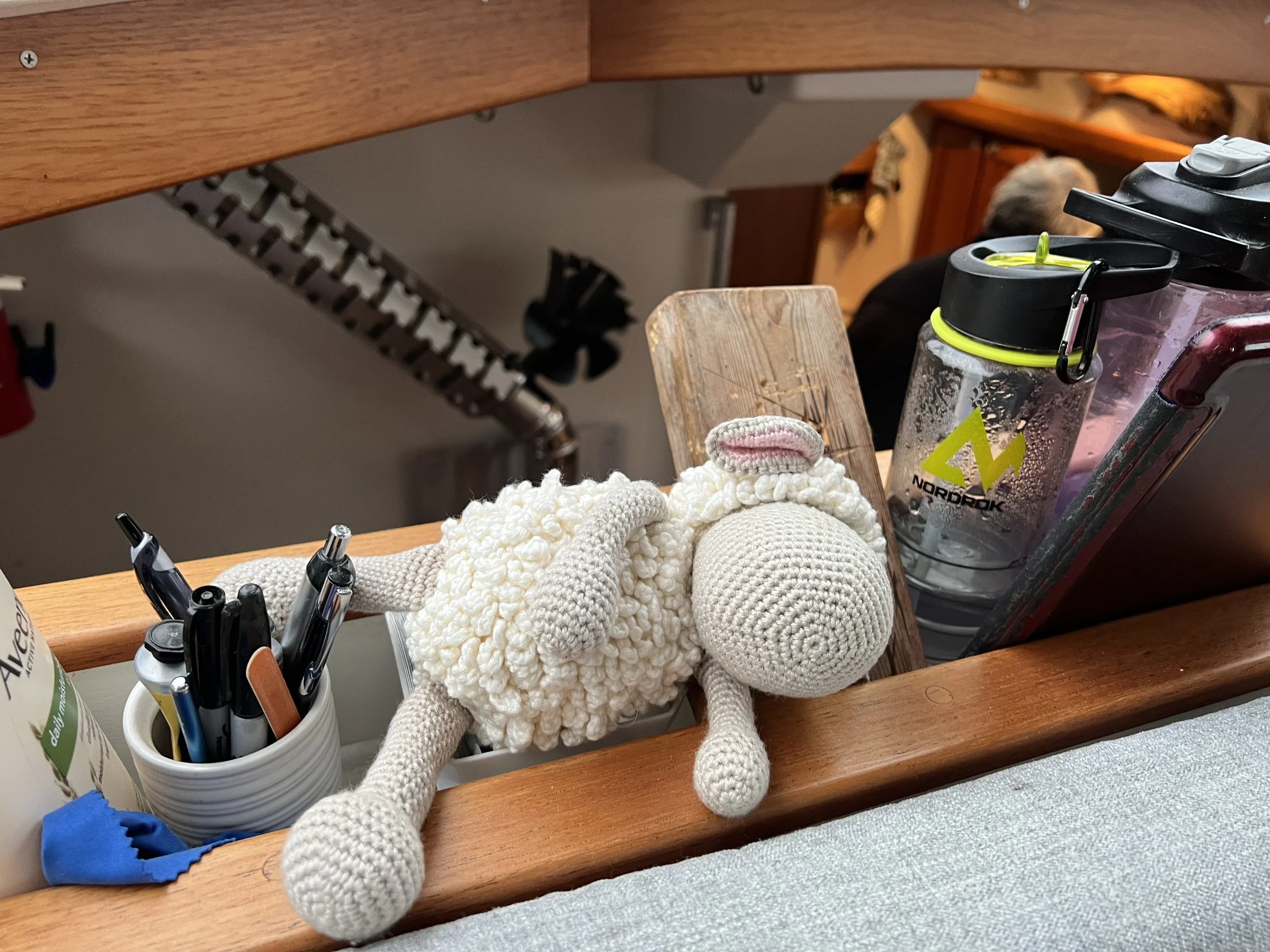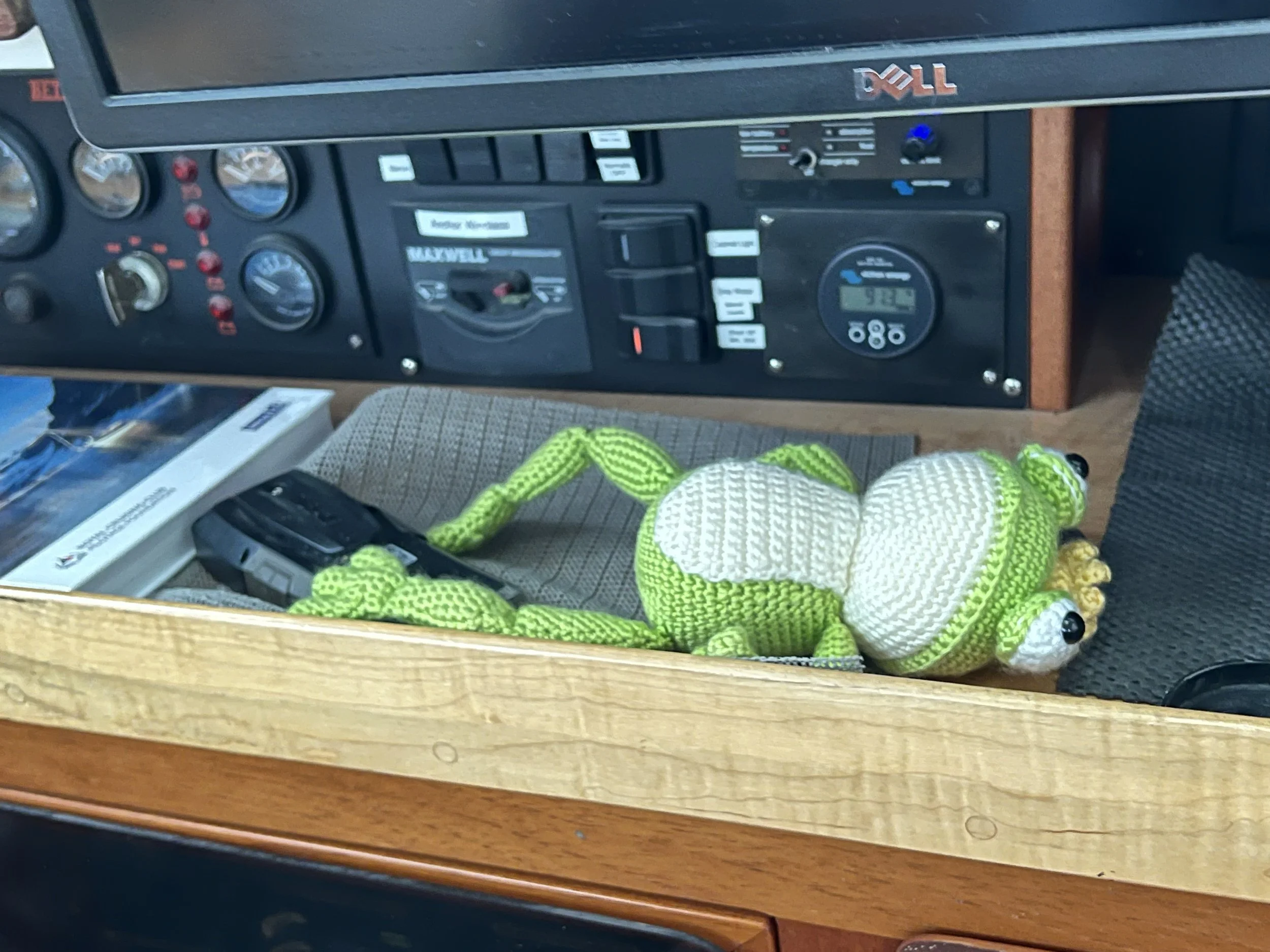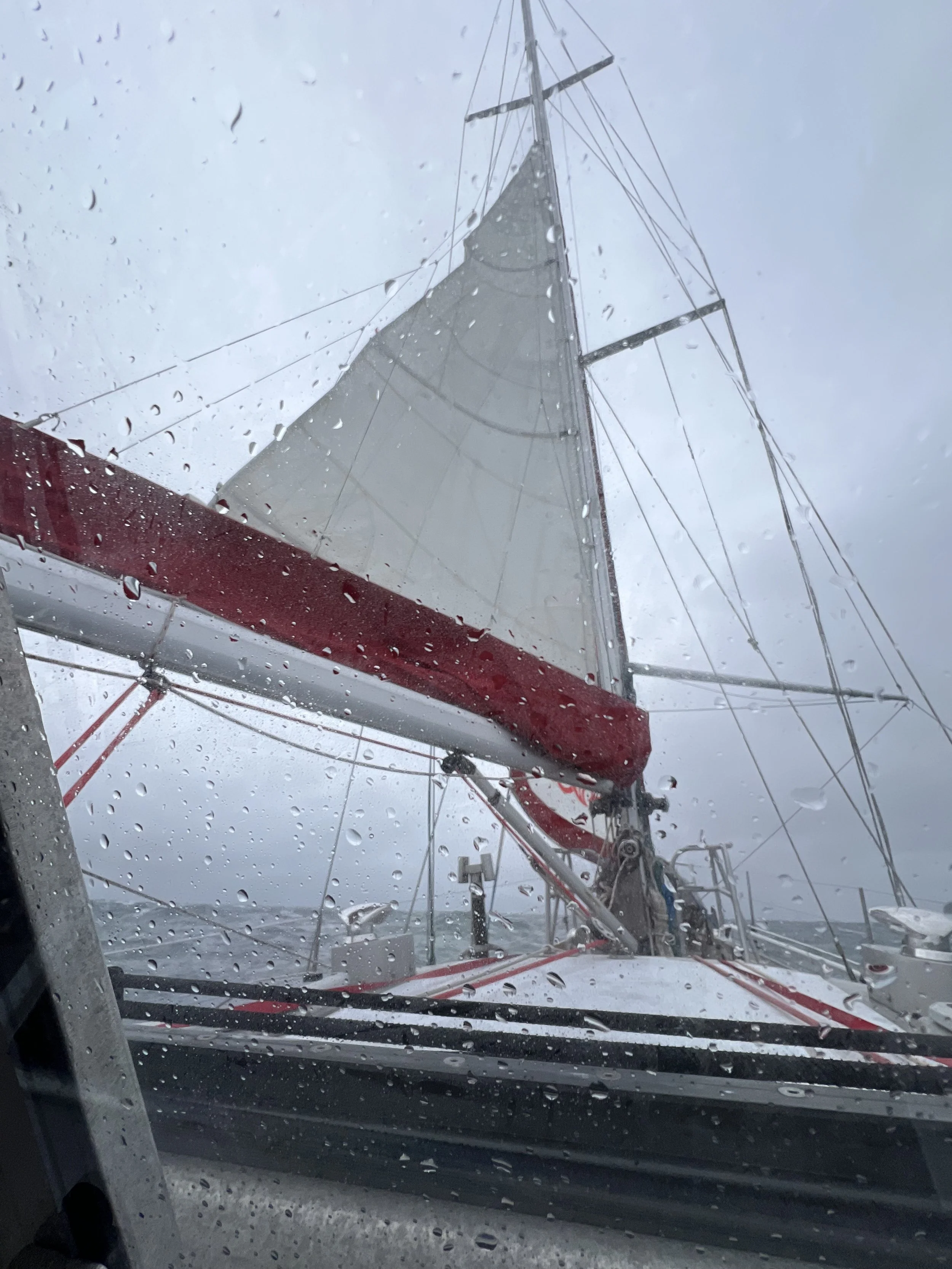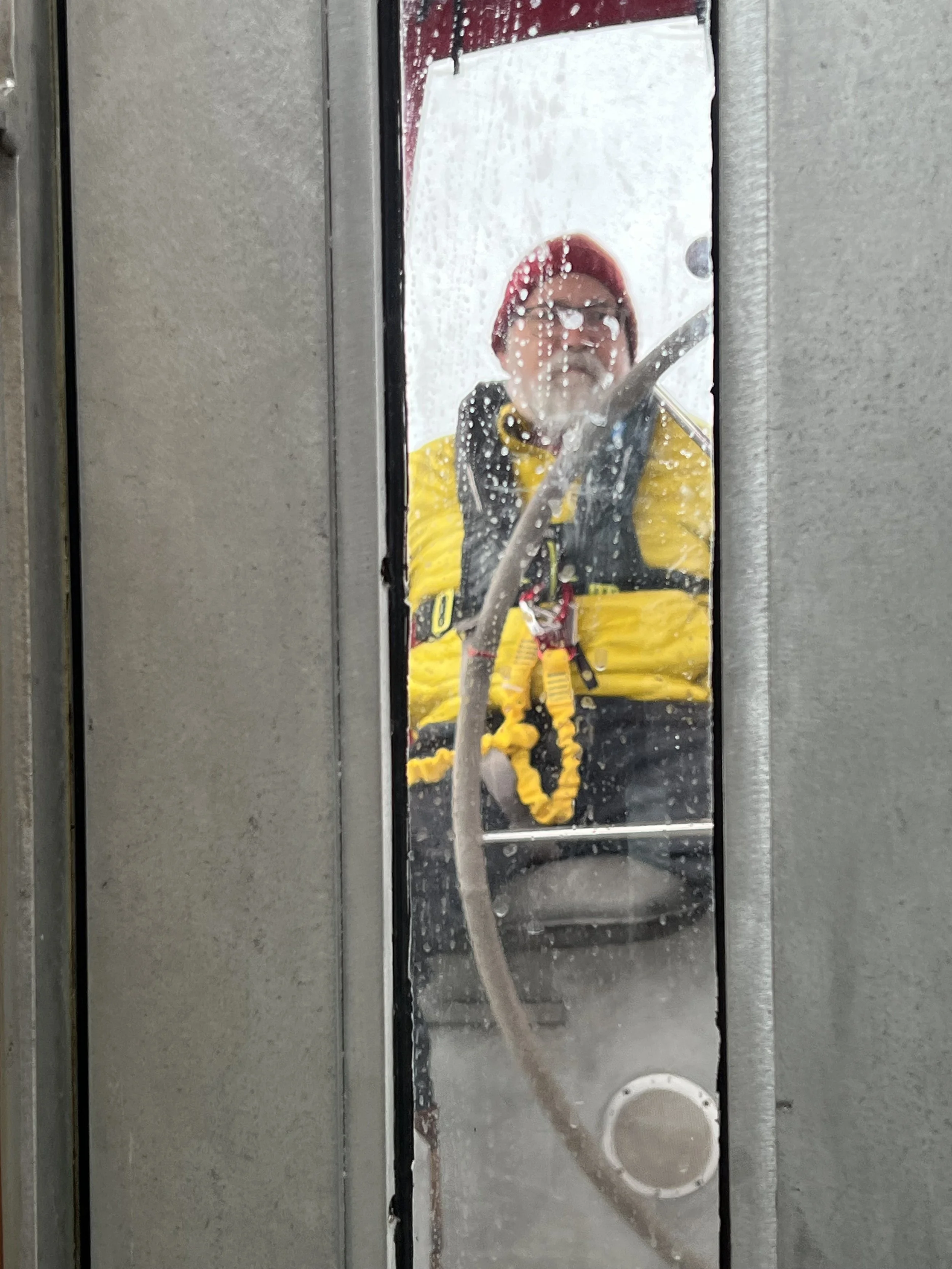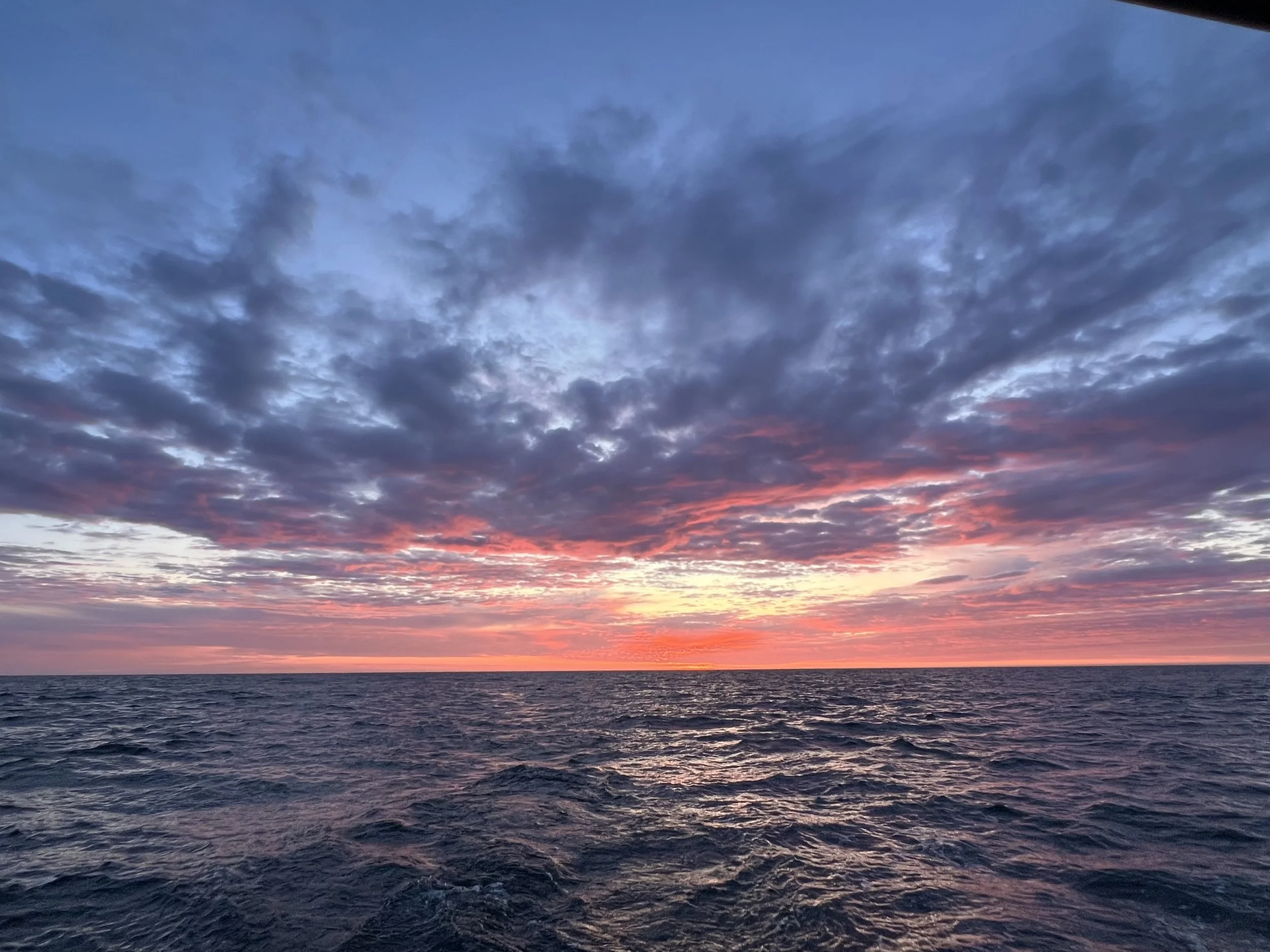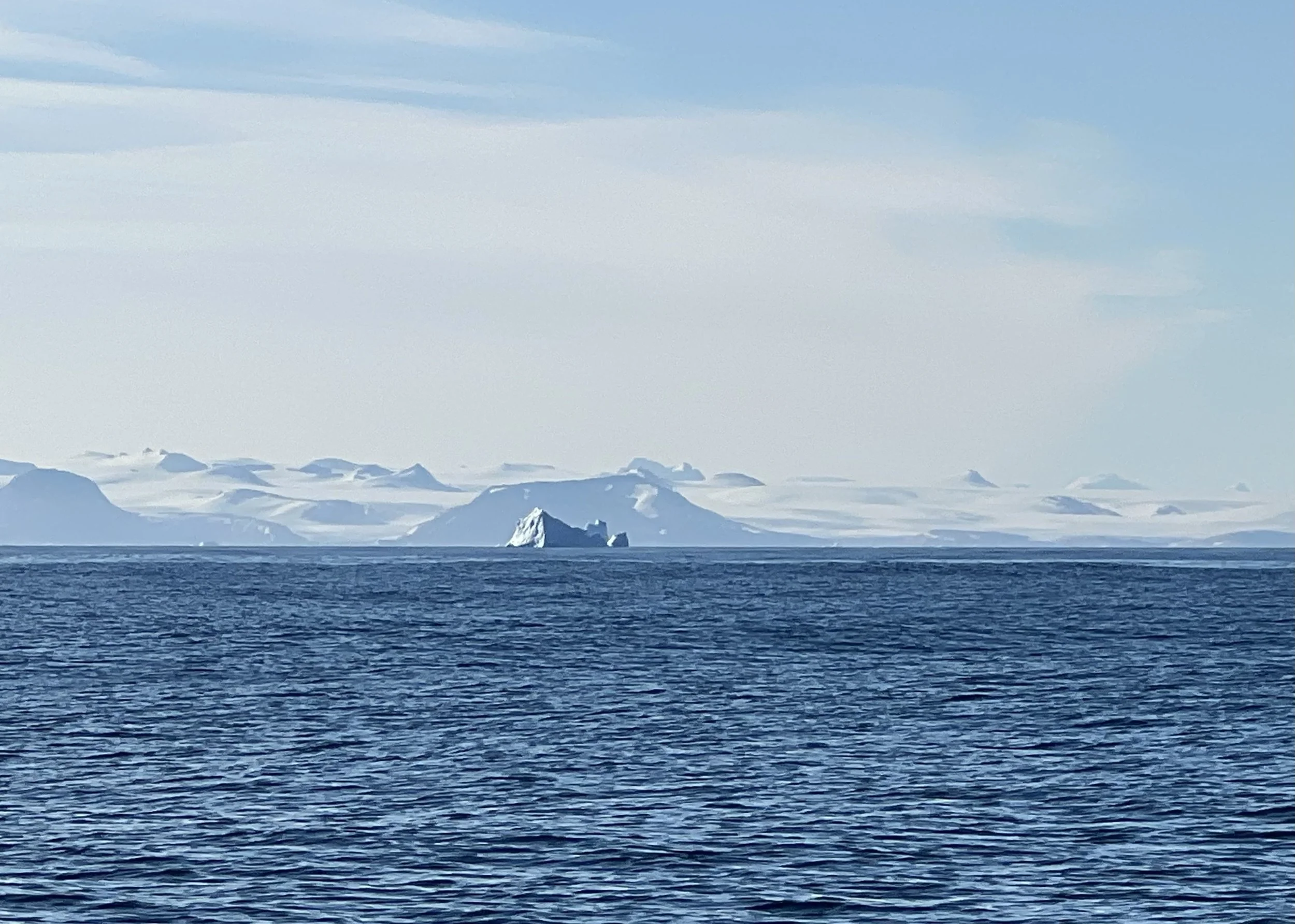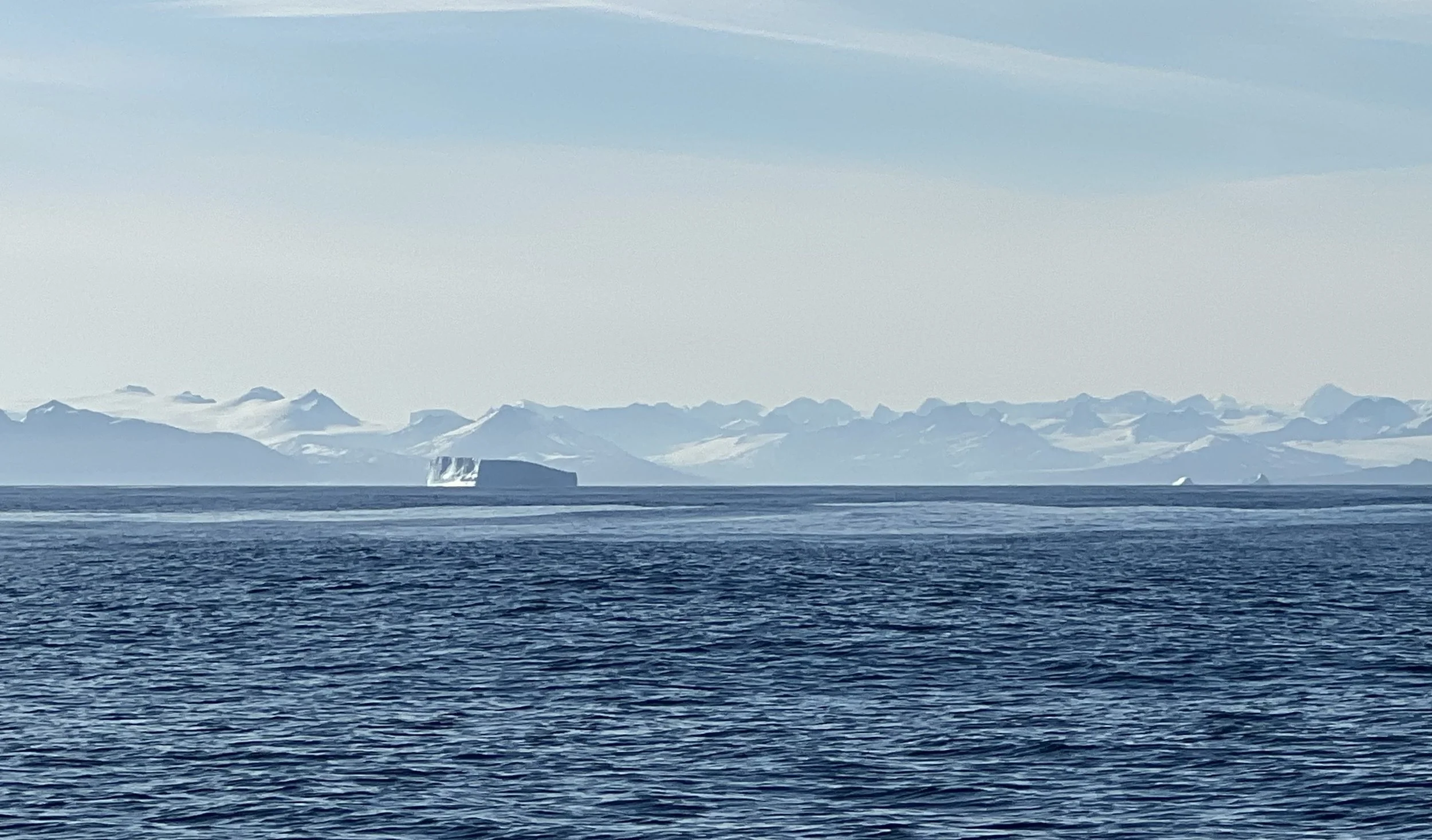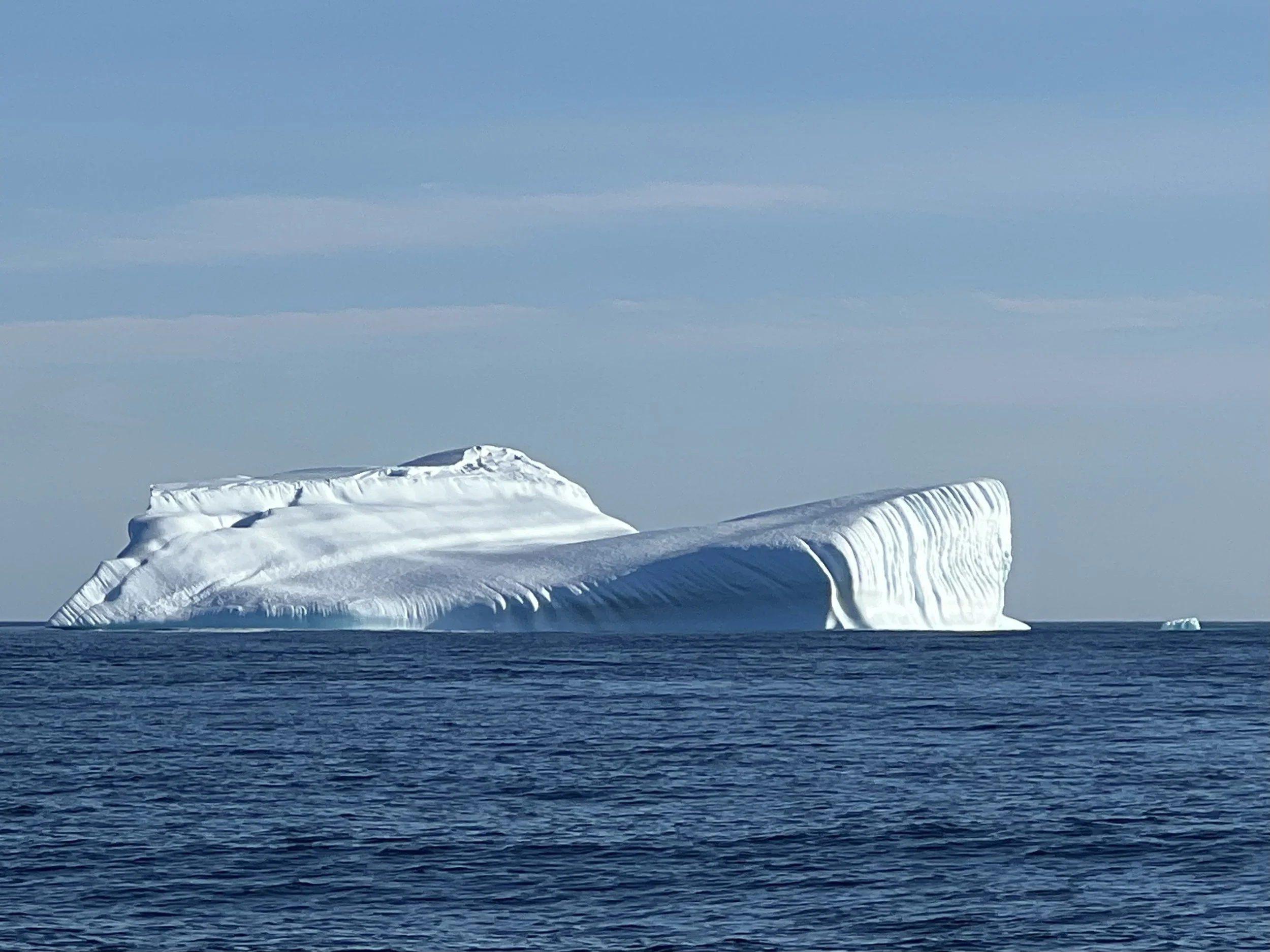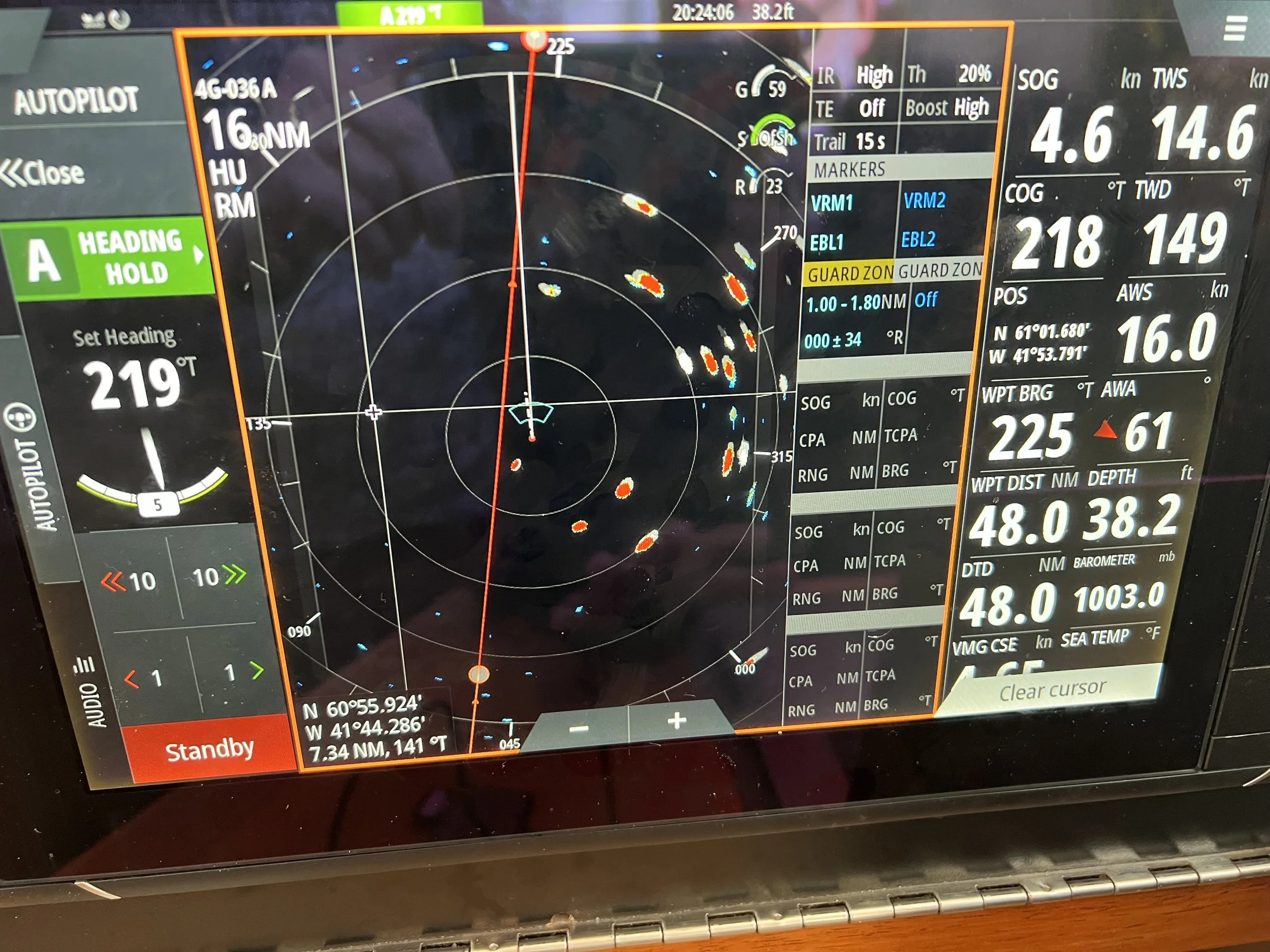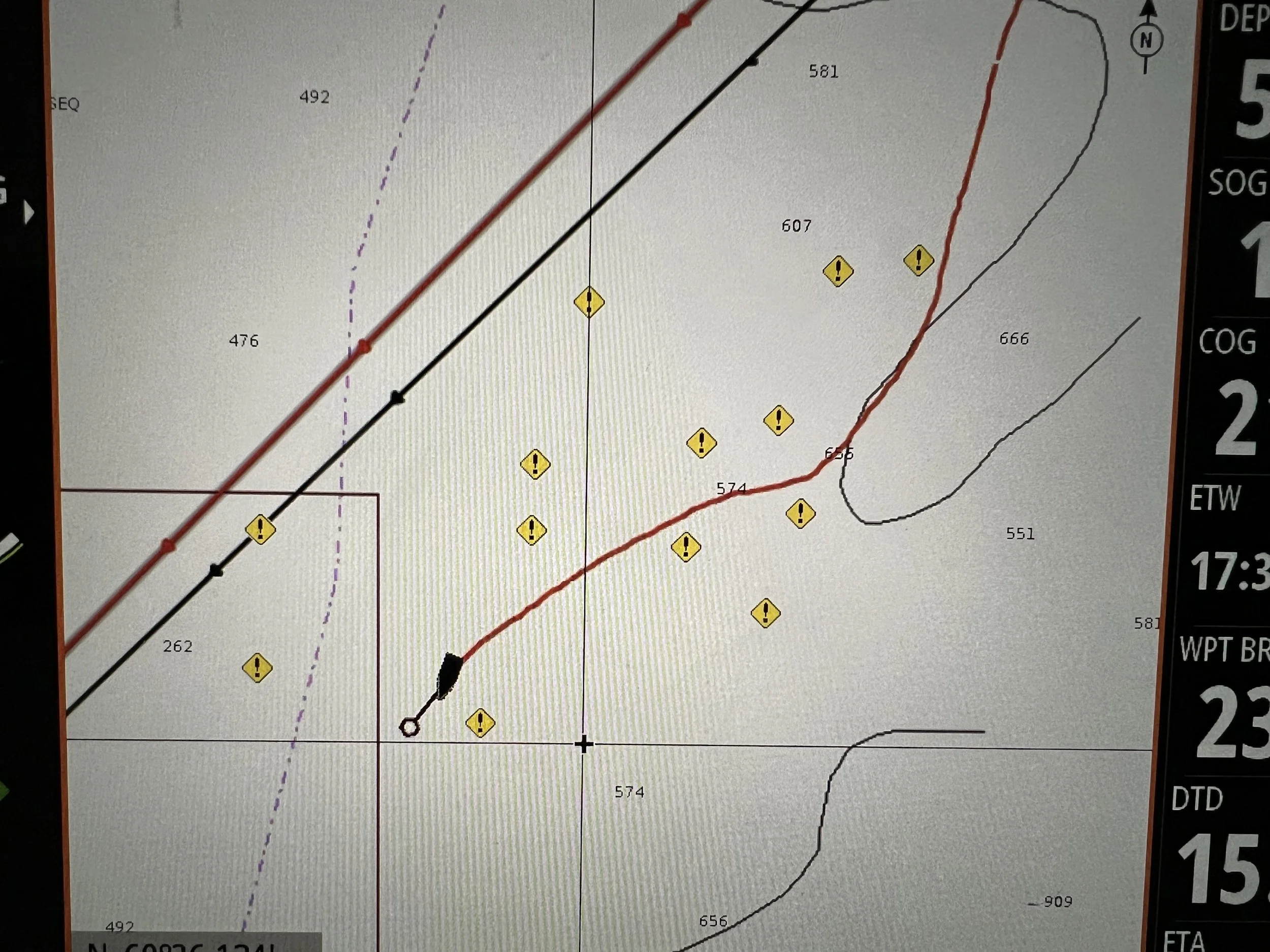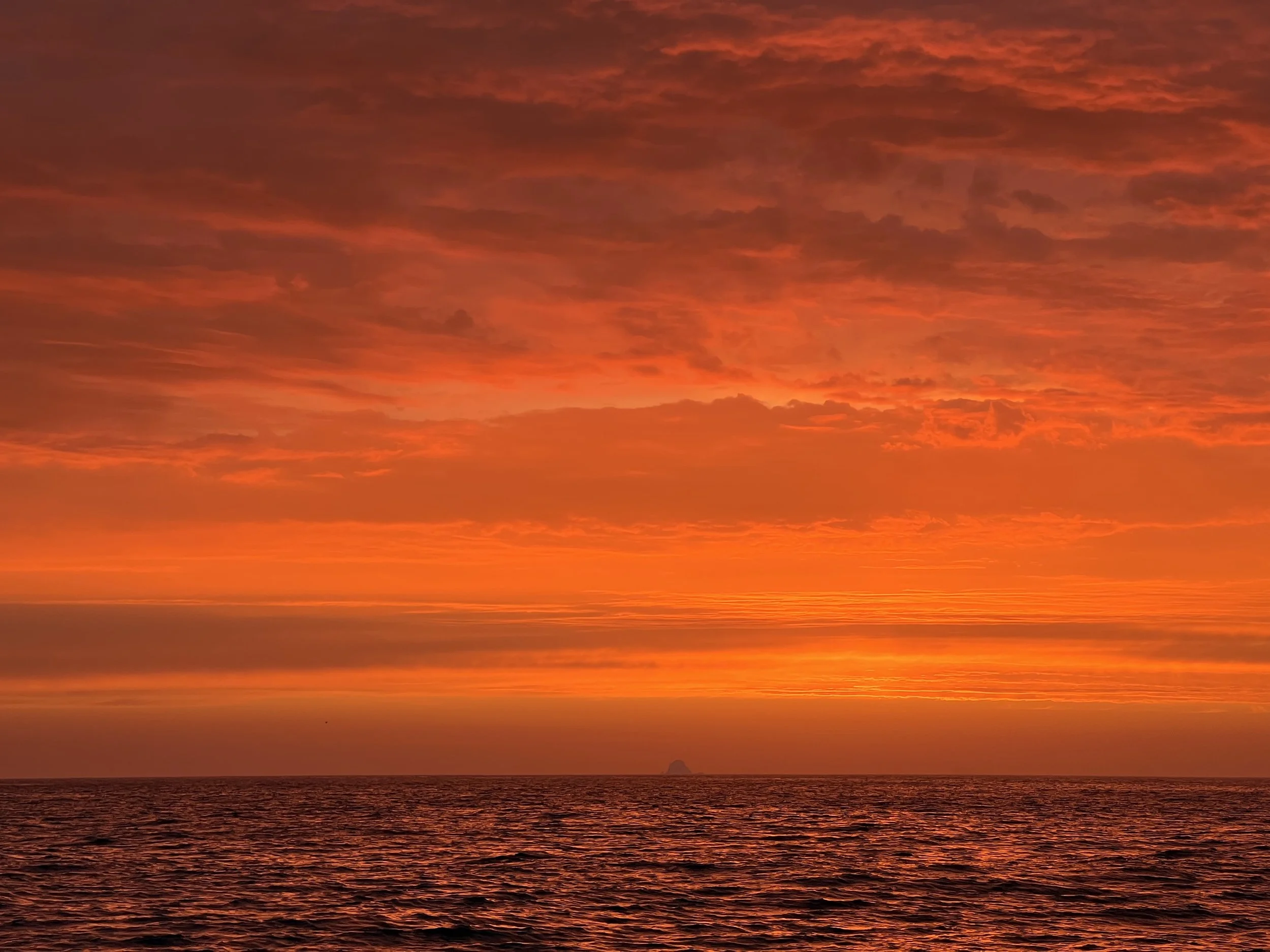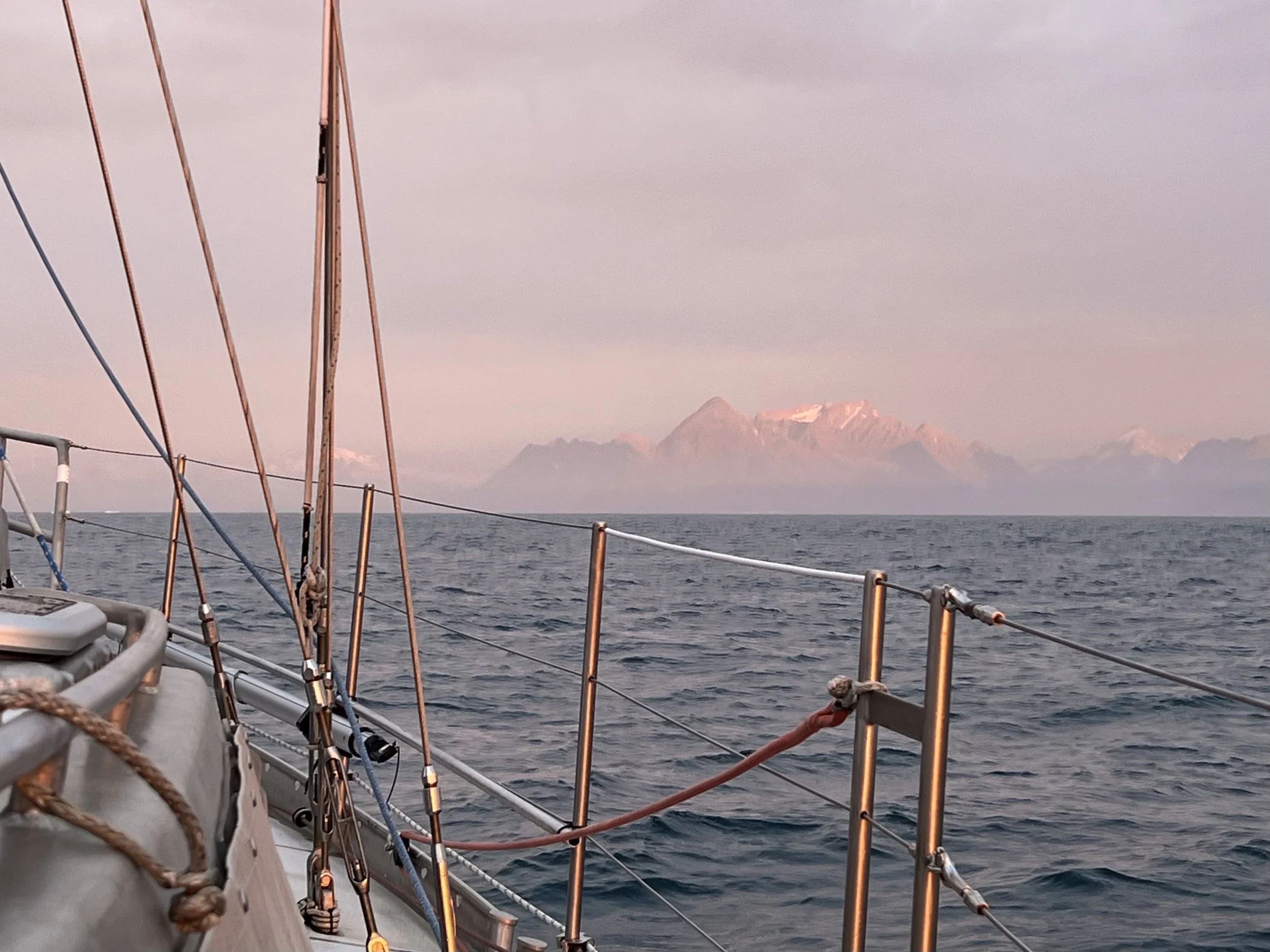The Viking Route
Helacious and puffin, waiting patiently. The smog was courtesy of Sundhnúkur volcanic activity.
Patience is a virtue. Well, we sure hope it will pay off. How ironic that the ice had cleared in Greenland very early in the season. Our friends on SV Pangey had left at the beginning of July for Tasiilaq. On the eastern shore of Greenland, halfway between Kap Farvel and Scoresby Sund, Tasiilaq is a popular place for European boats to visit. It is a mere 300 nm crossing from NW Iceland, needing a weather window of just 2.5 days. Ideal for those boats wishing to return home after their Greenland adventure.
Helacious, however, is wanting to continue west, complete the Viking route and sail to Canada and back to the US east coast. Crossing over to Tasiilaq was tempting, but we would still need to make the sail south at a later date. Once on the eastern shore of Greenland, that would mean a 350nm sail through the ice field with no charted anchorages. Outside of a few designated areas, a permit is required to explore Greenlands east coast. This was not something we relished, especially being shorthanded with just us two onboard. A better plan for us was to sail 600nm across the Denmark Strait toward the southern tip of Greenland and cut through Kap Farvel via Prins Christian Sund.
The weather would not cooperate, “most unusual,” we would hear constantly from the local fishermen. It was indeed; prevailing winds for July are normally from the NE, providing a gentle push across the Denmark Strait. What we saw instead was a constant parade of lows passing north. In “normal” years, these would slide along the south of Iceland and pass by the Faroes and Scotland, in July 2025 they took a different route. There was just not enough time between weather systems to make the 5-6 day crossing without getting slammed. In addition we wanted to arrive in calm conditions when we were likely to need to spot icebergs, bergy bits and growlers.
We tried to stay busy. We explored the length of Isafjarðardjúp, the large fjord that digs deep into the northwestern penninsula of Iceland. The pod of humpback whales we saw on the way down to Borgarey, provided entertainment. The gloomy smoggy skies were due to the erruption of a volcano in the south west, some 250 miles away. We anchored in a bay off Borgarey and watched that evening as three people landed on the island, unloading a huge net and rifles. The following day we took the dinghy in and asked if we were allowed to land, we were curtly told no, so we went for a dinghy tour of the small island instead. The puffin breeding colony appeared to be very healthy judging by the enormous numbers of puffin, both onshore and in the water. Normally very shy, they bobbed around close to the boat and stood guard near their nests on land. Puffin hunting is still permitted in Iceland, the season is April 15th to 25th, heavily restricted due to concern about declining puffin populations. We are not sure what those ‘gentlemen’ were up to.
There were also many seals basking in the faint sunlight that made it through the smog. Their large numbers probably explained the poor fishing that evening. The next day we went for a swim in the thermal pool at Reykjanes. The old boarding school, converted to a hotel, had a large geo-thermally heated pool. The hotel was very rundown and was more reminiscent of a barracks than a hotel. However the water was warm and the view not too shabby.
We returned to Isafjörður to stock up on supplies. We discovered a patch of rhubarb on the hillside and filled the freezer with future treats. John and Allison, sailing friends we met in Dominica in 2021, were on a driving tour of Iceland. We welcomed them onboard for tea and cake and caught up on news of their new boat and sailing plans. The harbor was still full, although the turnover was steady with boats coming and going.
Getting weary of the scenery and watching boats leaving for Greenland while we were still trapped, we left Isafjörður and made our way slowly south. We quickly regained our sea legs on the first passage with winds more sporty than expected. A reminder that these northern winds are to be taken seriously. We anchored adjacent to Dynjandi waterfall, a spectacular sight. The fjord on the way in was also dramatic with the afternoon light and deeply carved hillsides.
Dynjandi waterfall.
We moved on to take shelter from the next storm system heading our way, in the small and busy fishing harbor of Patreksfjörður.
We stayed here for a while, watching the weather. There was a small grocery store and a nice walk along the river valley. The defences constructed to protect the town from landslides were most impressive, indicating the serious threat they pose.
We had made the right call, a huge weather system passed by, pounding us with 35+ kt winds for two days. Fortunately we were on the leeward side of the dock and we were blown off with only the occasional crash into the wooden pier. We amused ourselves, Brian working on his book about building Helacious; I plan on wearing this airy sweater in warmer climates.
And then we saw our chance. Finally a few days with no serious low heading our way. We left Patreksfjörður and sailed west, leaving the coast of Iceland early August.
Leaving the west coast of Iceland.
The journey started sporty, with the wind insufficient to overcome the waves from the previous storm. The winds slowly but steadily built.
Some of us felt a little mal de mer. And then a previously unforecast gale approached. 30-35kt sustained winds for 24 hours. Fortunately the wind was from behind which lessens the impact (for the non sailing readers). We had a third reef in for the first time and the genoa poled out. It was uncomfortable but manageable, until it wasn’t.
In the large waves the autopilot would keep us on course for the most part, however occasionally a much larger wave would throw us around. It only takes one of those to spin you; the wind catches the sail on the wrong side, and before you know it you have gybed. Two of our batten sail cars broke. We quickly realized that sail plan was not the best in these large, quick seas. We had used it successfully for the trans-Atlantic crossing in the trade winds, Cape Verde to Caribbean. However these were quite different waters. With the poled out headsail there was no force at the front to correct the slewing motion. When we took the genoa in and instead pulled out the staysail, it was a more controlled (not necessarily comfortable) ride. Lesson learned, but it now meant we would have to sail with reduced sail until we could rummage in the lockers to see if we have replacement parts.
The morning after the storm.
The storm calmed down as we began the approach to the Greenland coastline. We had opted to stay a little north of the rhumb line to try to mitigate the severity of the winds. However this needed to be balanced with the need to stay out of the northern iceberg field. The end result was we saw land quite far north and then had the pleasure of traveling south, about 30 miles offshore, with that incredible vista for a full day.
The wind had died completely, and the water was so calm. It was easy to forget the past couple of days when we had hunkered down and swore we wanted to take up gardening as a hobby.
And then we got closer and finally spotted our first icebergs. Majestic in their size. We were hooked.
The sun shone and the winds were light, this time there were no complaints from the crew. It was perfect conditions to enjoy the view and also spot the growlers lurking just at the waters surface.
We still had 30 miles to go to our intended anchorage as the sun began to set. The moon rose full and the skies were clear. However, soon the clouds began to build, blocking the moon. Now the icebergs were only visible on the radar, the bergy bits too, although only when fairly close. The growlers remained invisible. This was a disaster waiting to happen. We turned the engine off and kept watch via radar, with the occasional visual look around. As I saw targets on the radar I marked them with a waypoint. We could then estimate their drift and make sure we were not on a collision course. The screenshot shows the result.
Monolith on the horizon.
The next morning at sunrise we cranked the engine and motored slowly toward the shore, dodging an increasing number of nearly invisible floating rocks.
Our destination was a protected pool in a landlocked bay, Kuugarmiut, about 20 miles north of the Prins Christian Sund entrance. The perfect stop for our first Greenland experience.
Follow our progress on the tracking page.
https://forecast.predictwind.com/tracking/display/SVHelacious/



